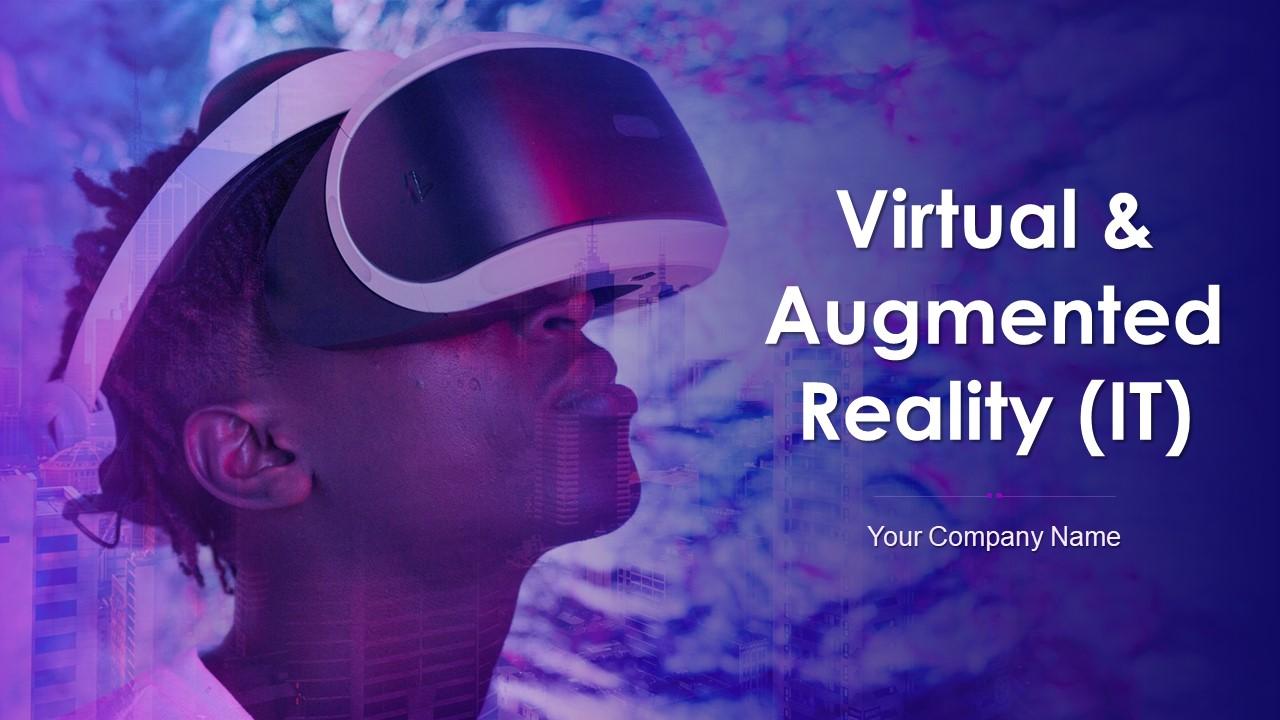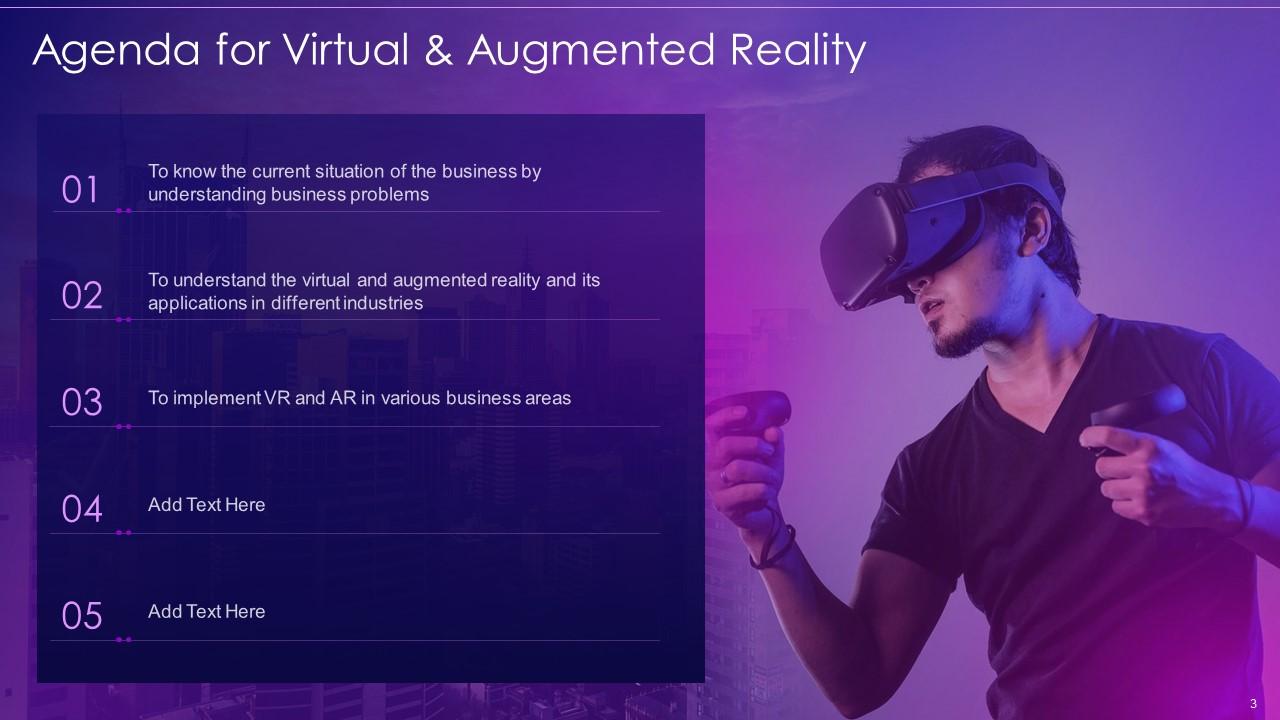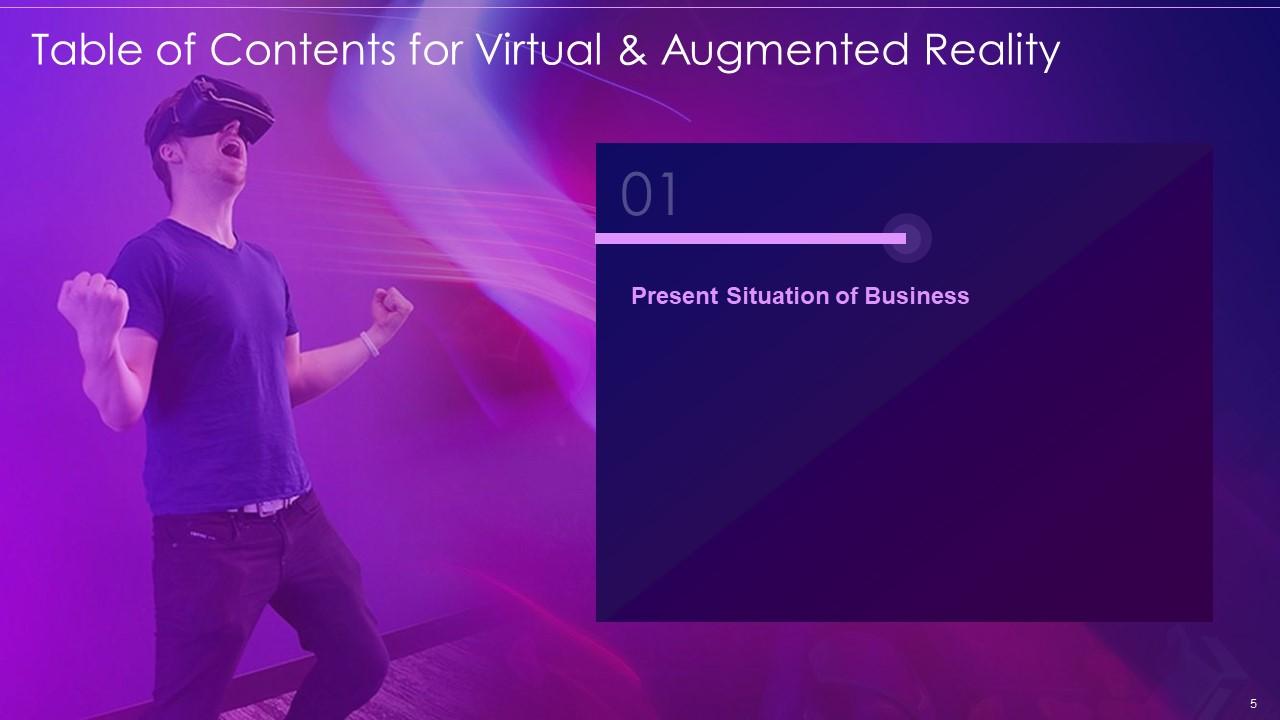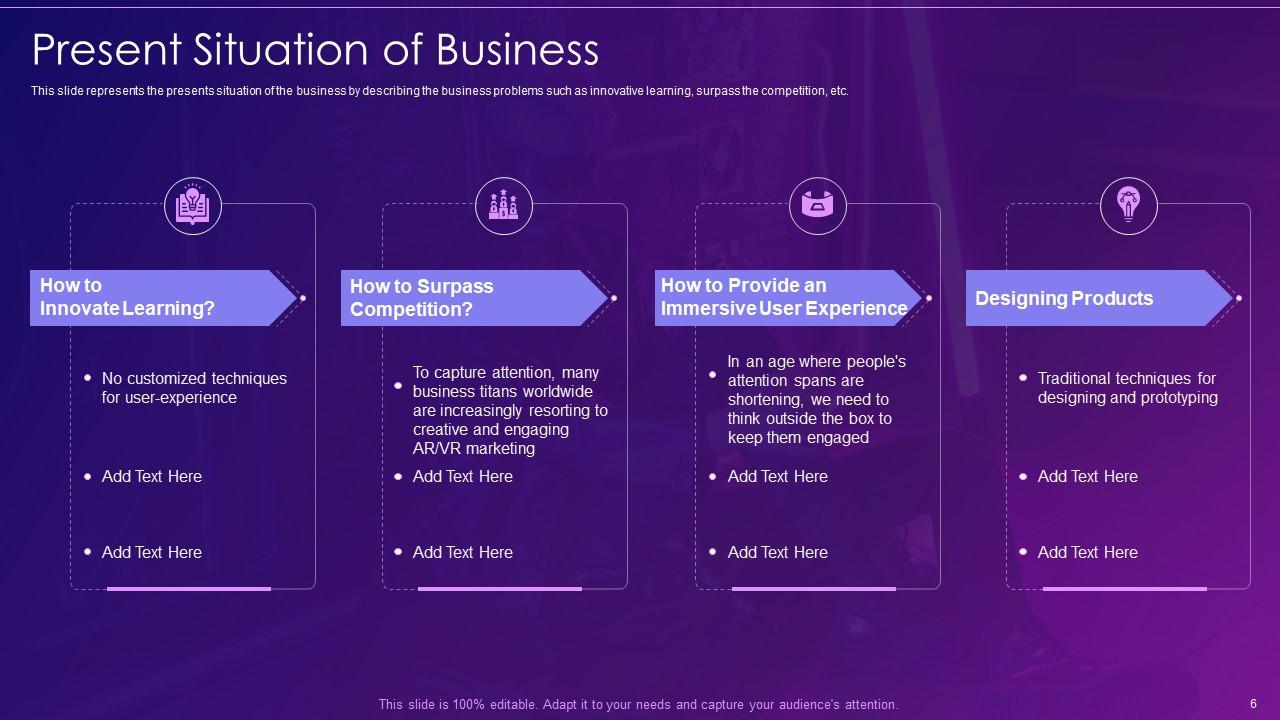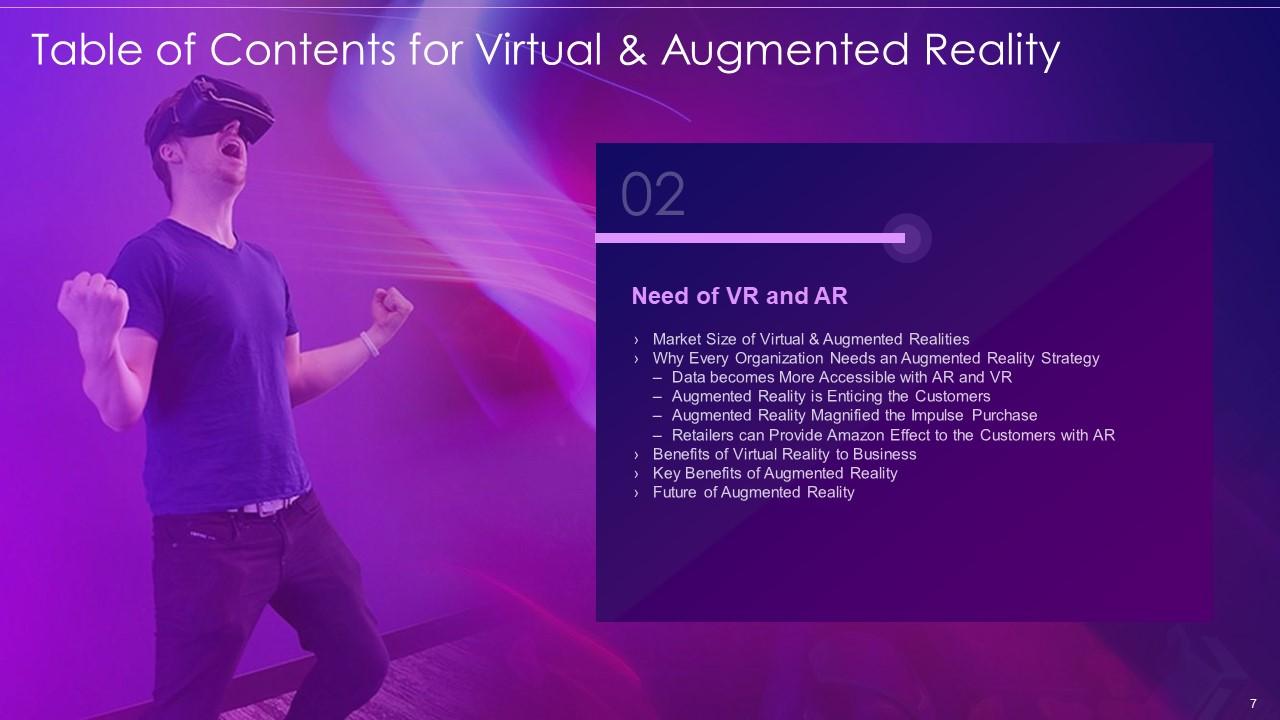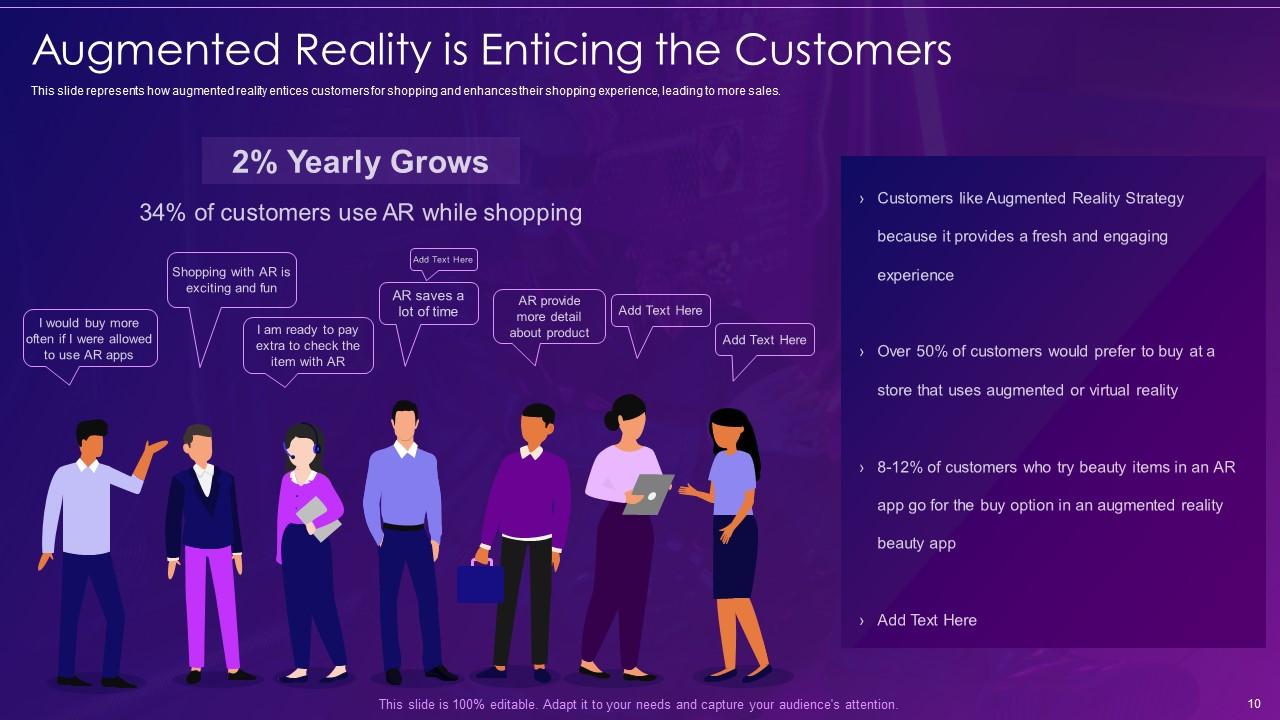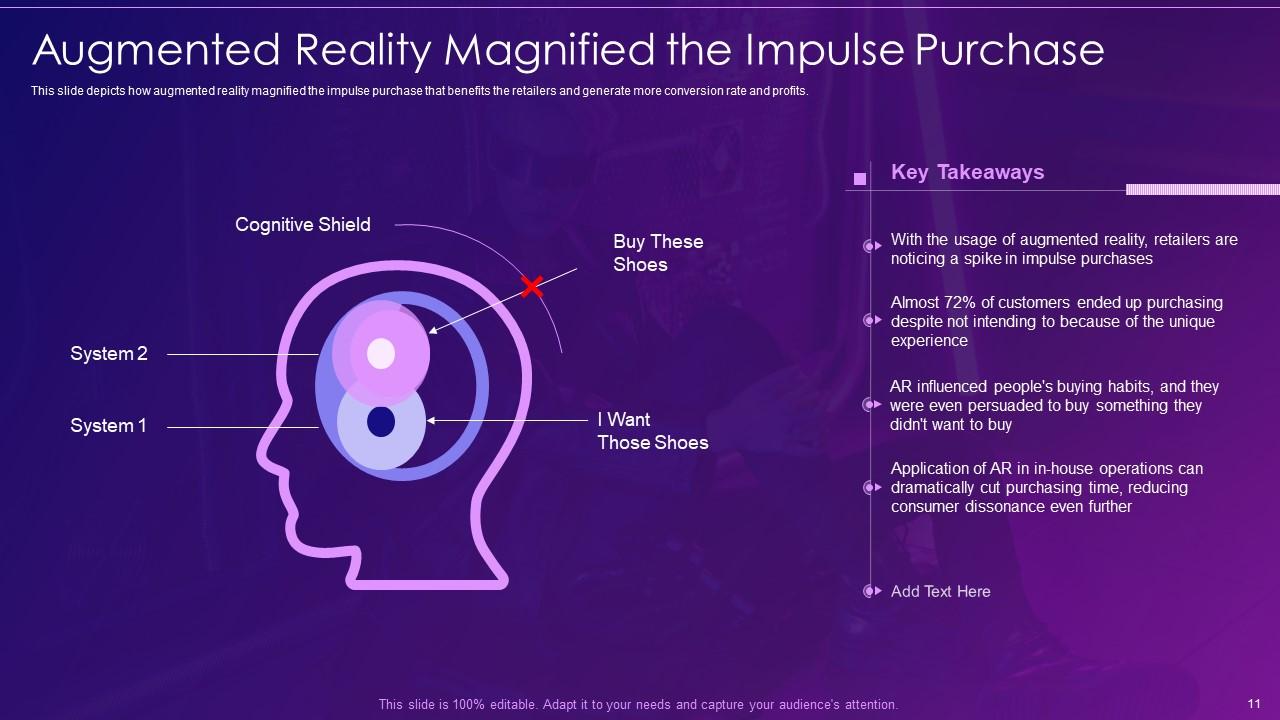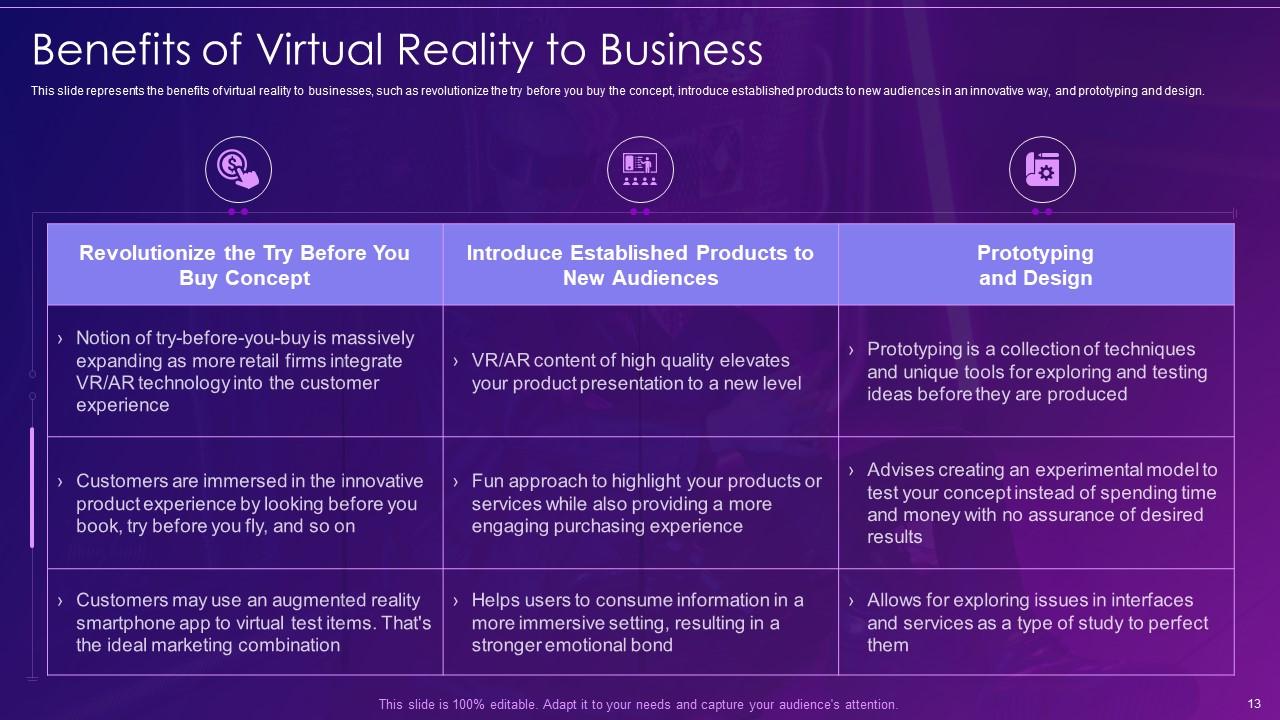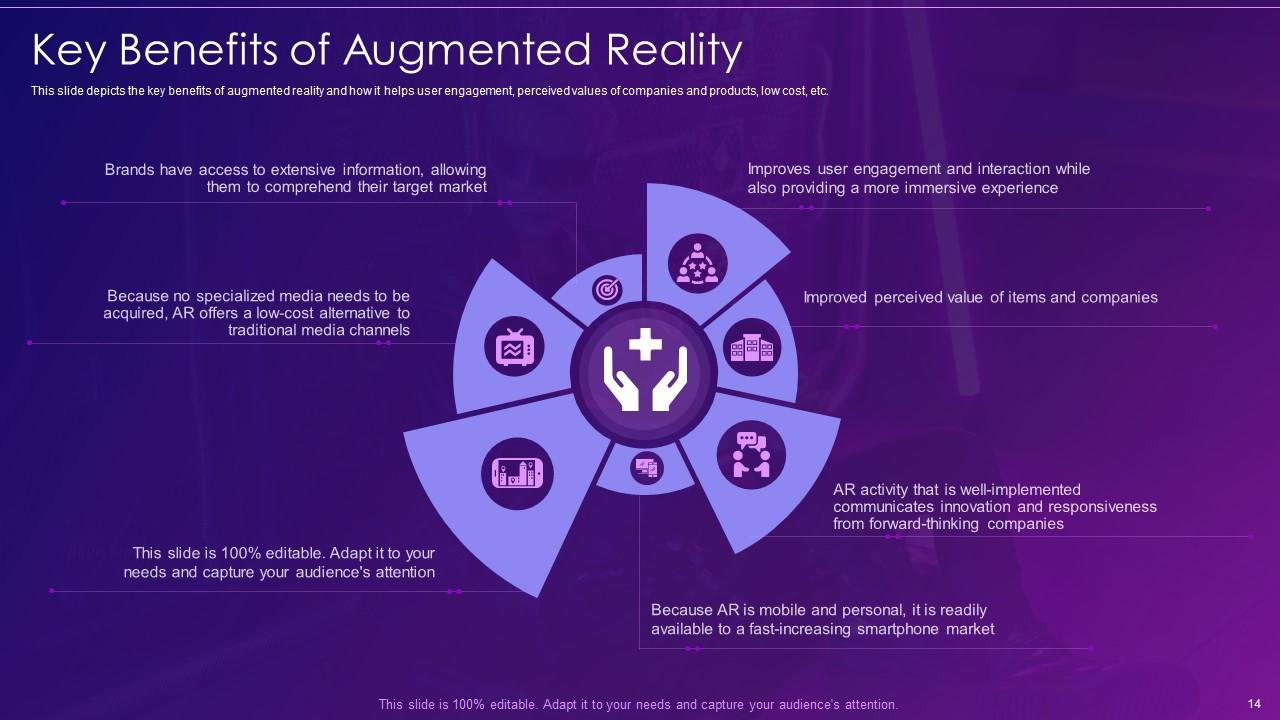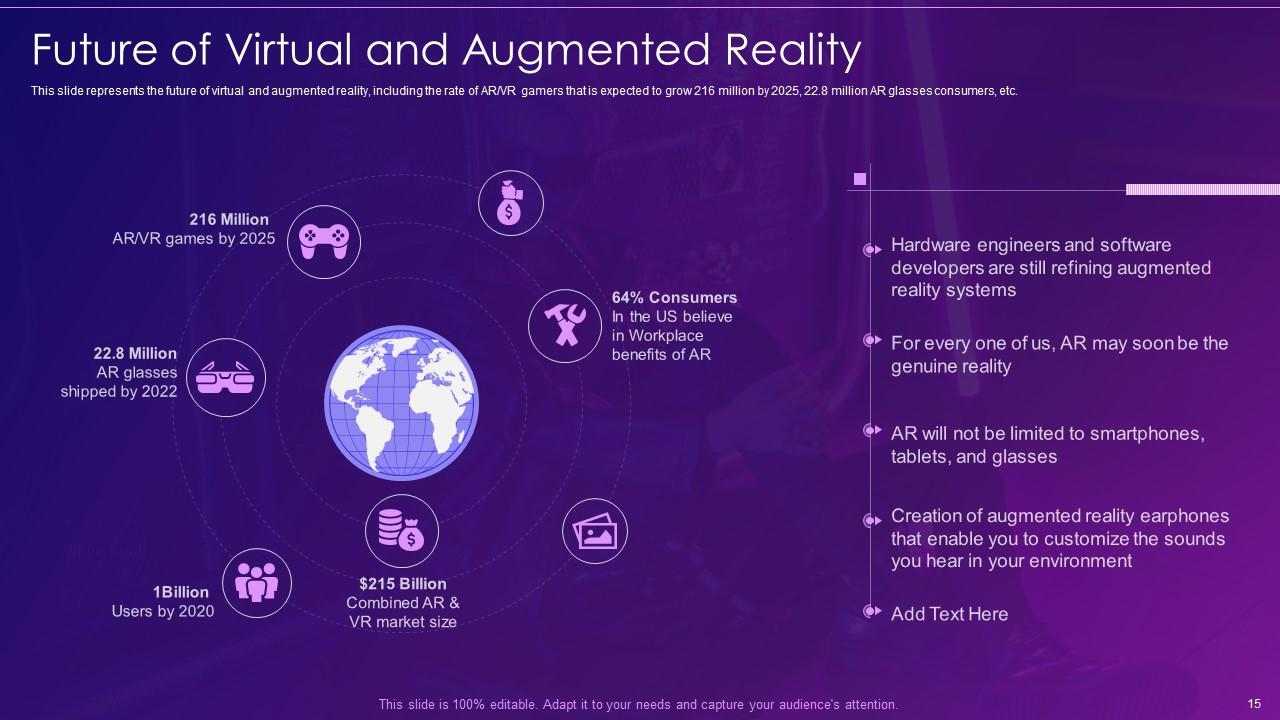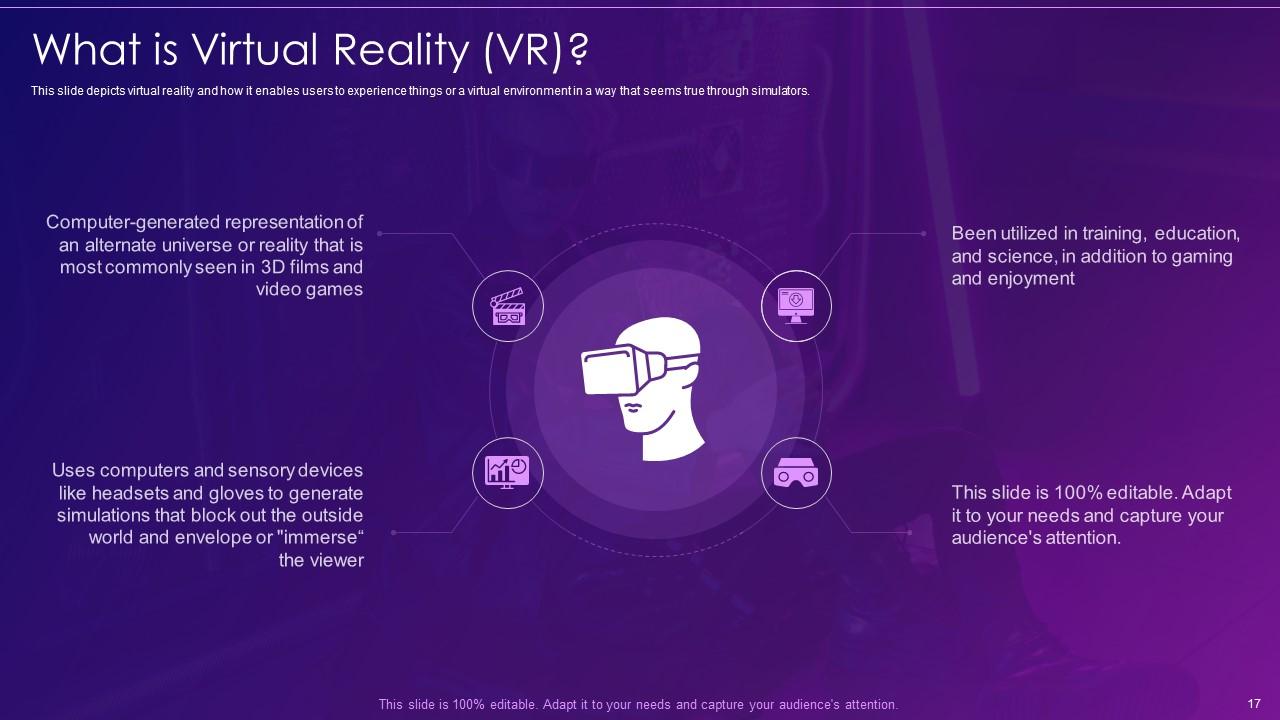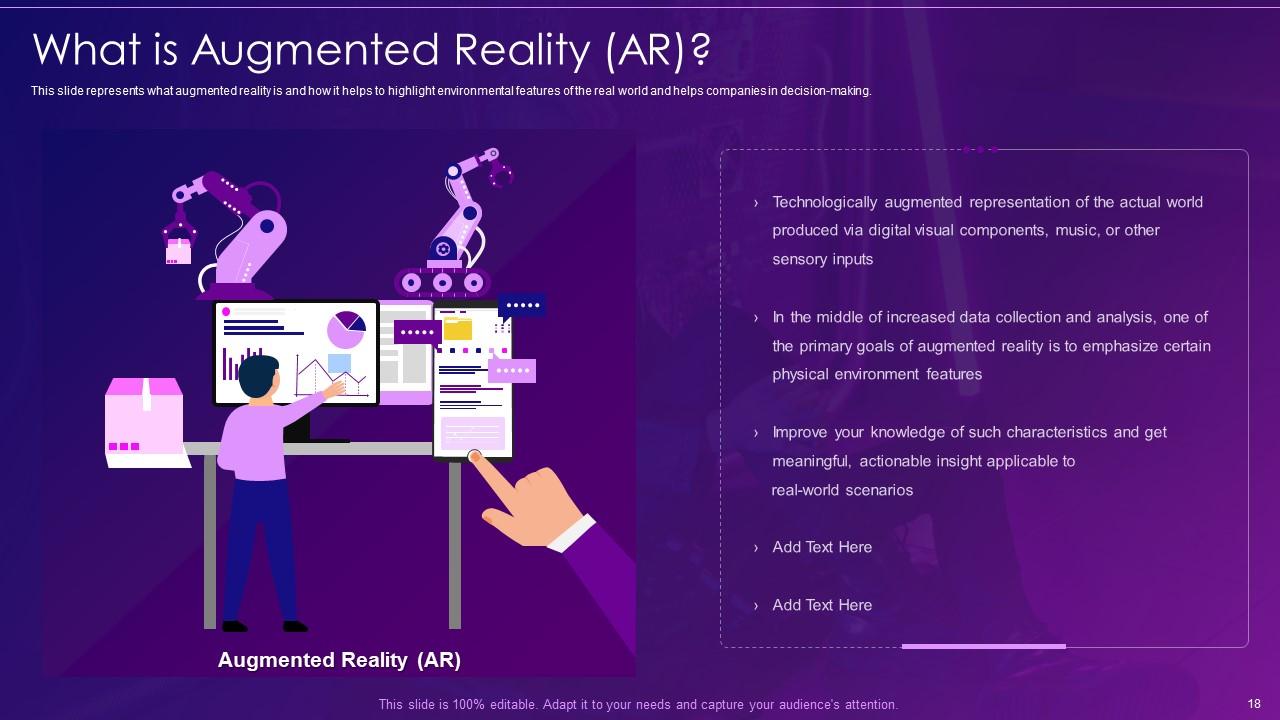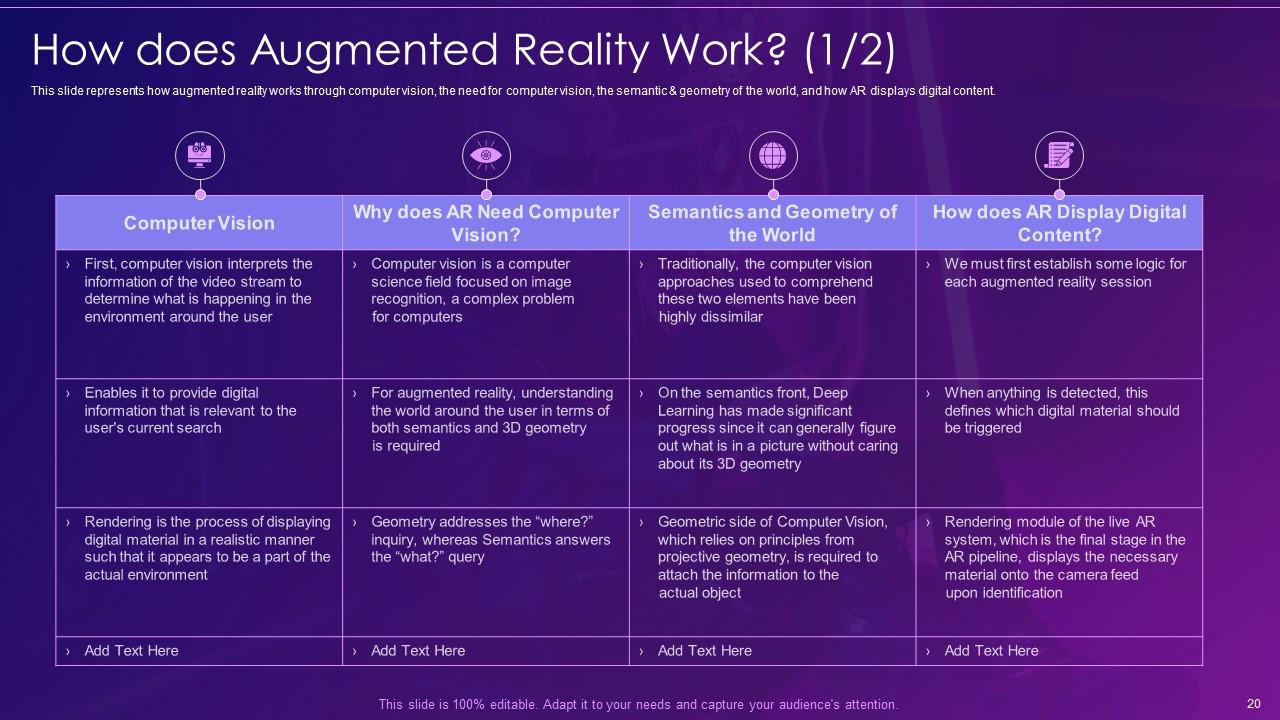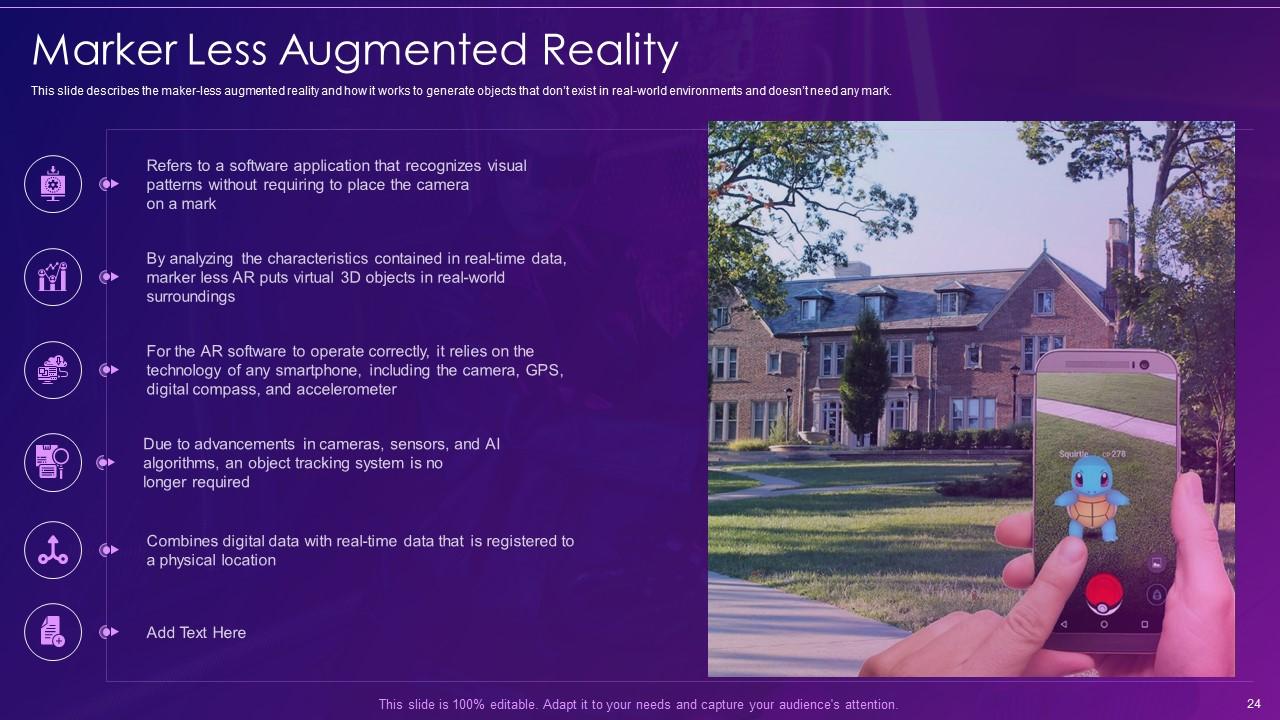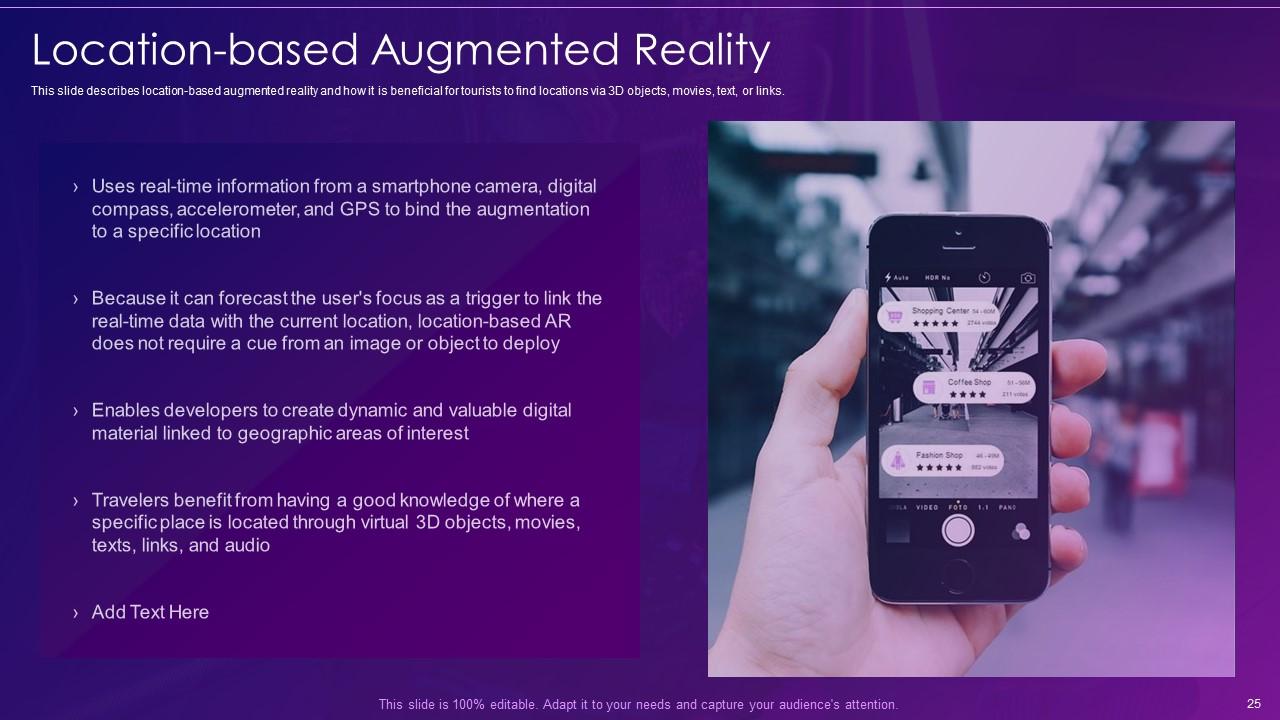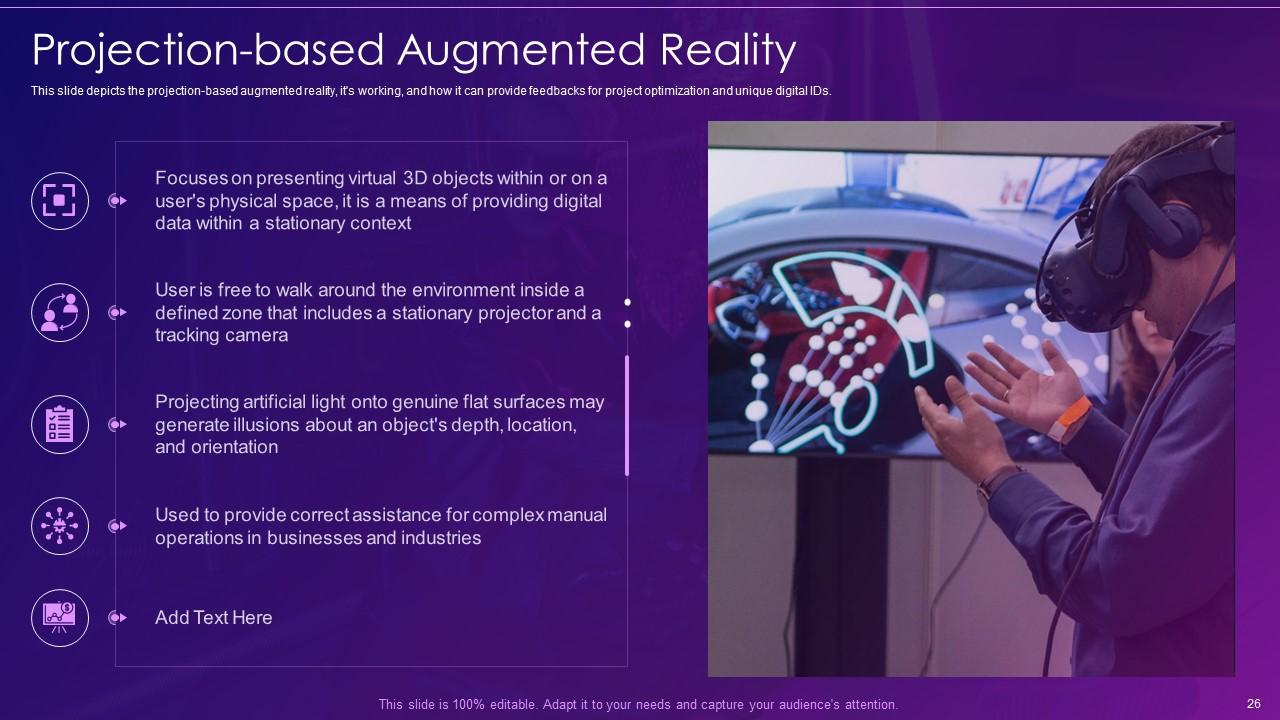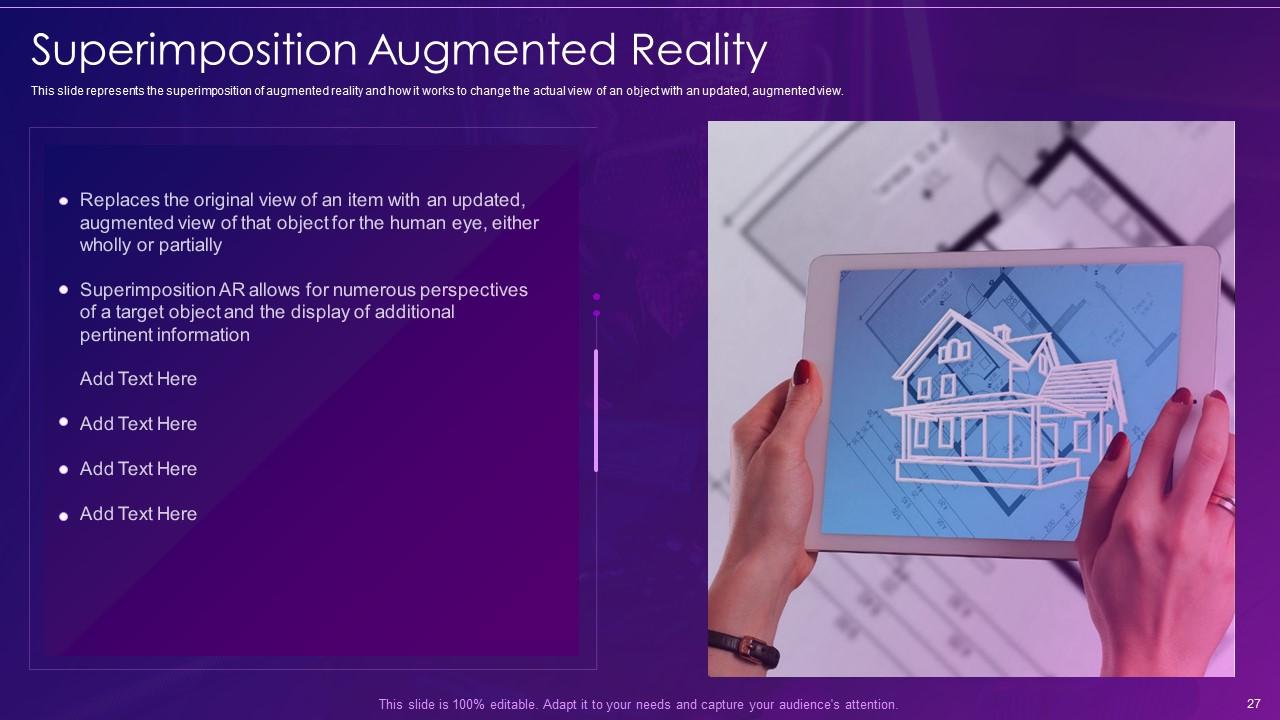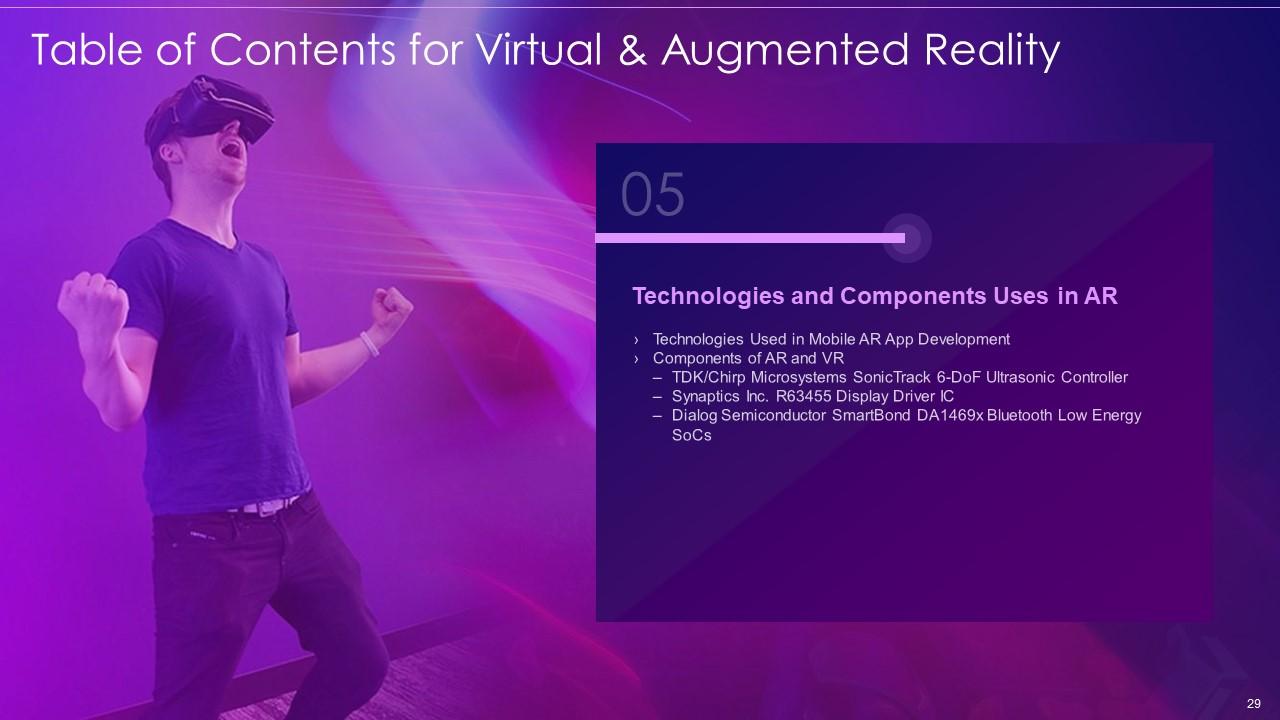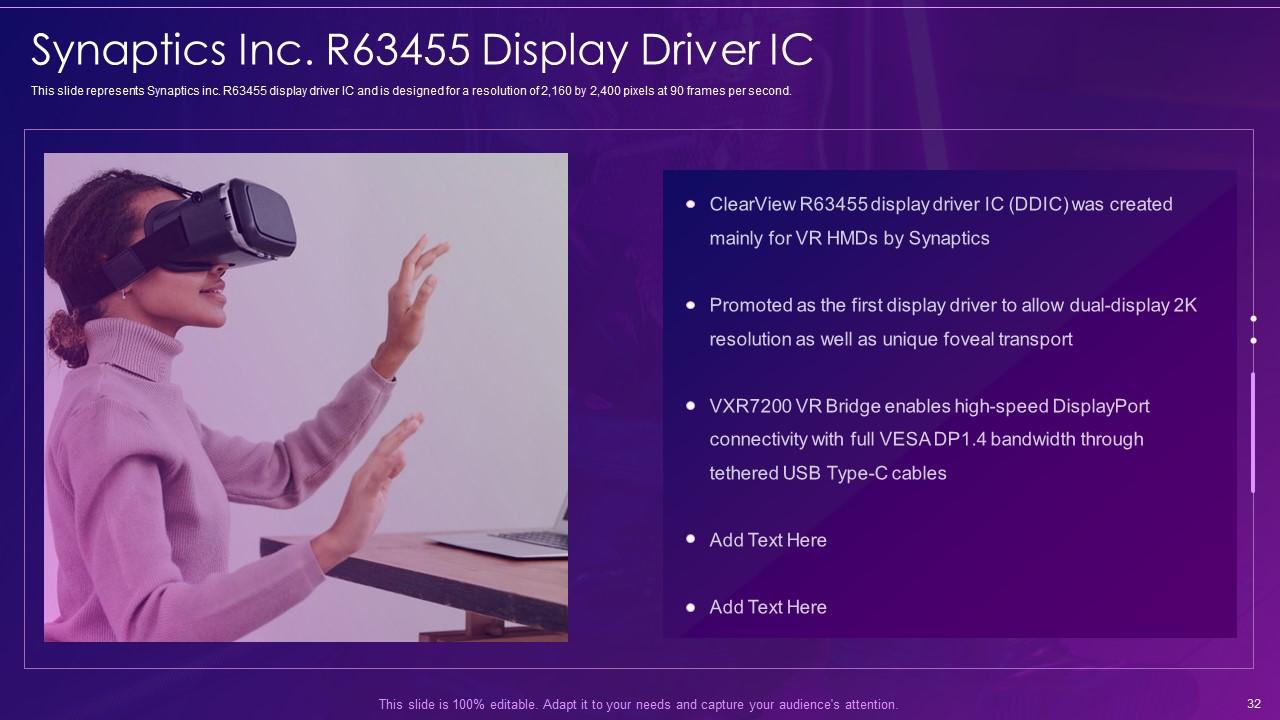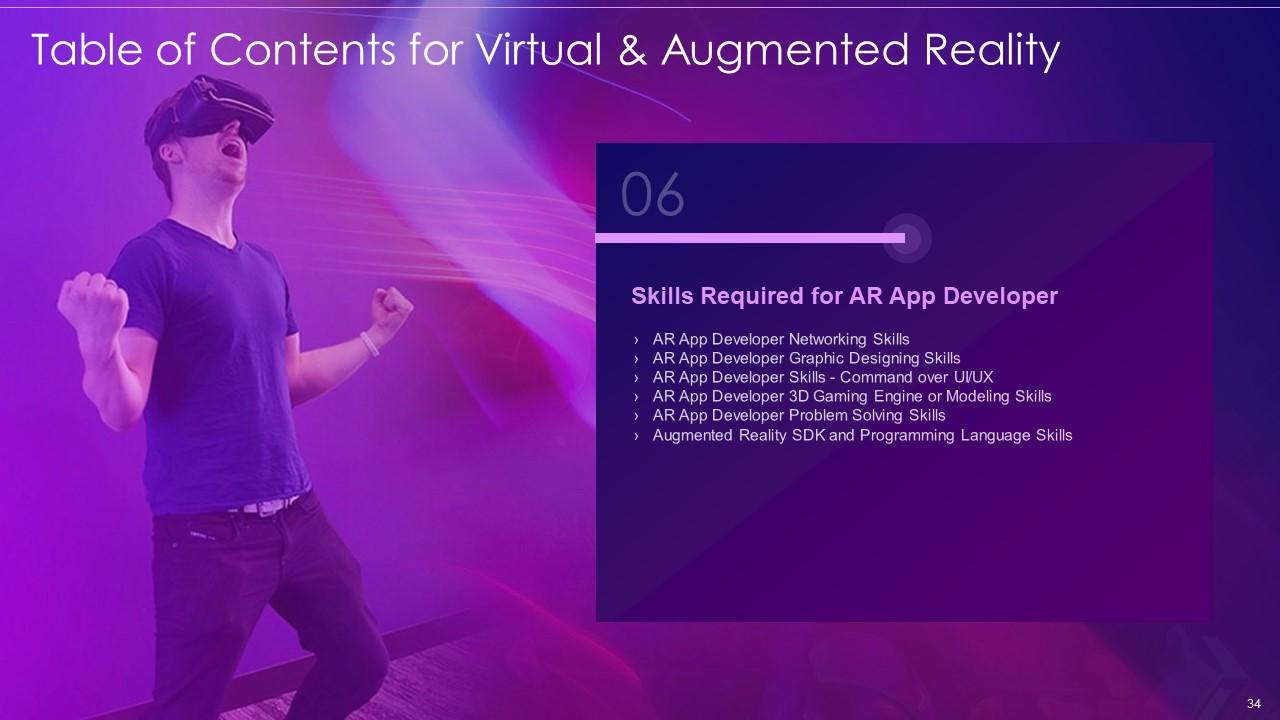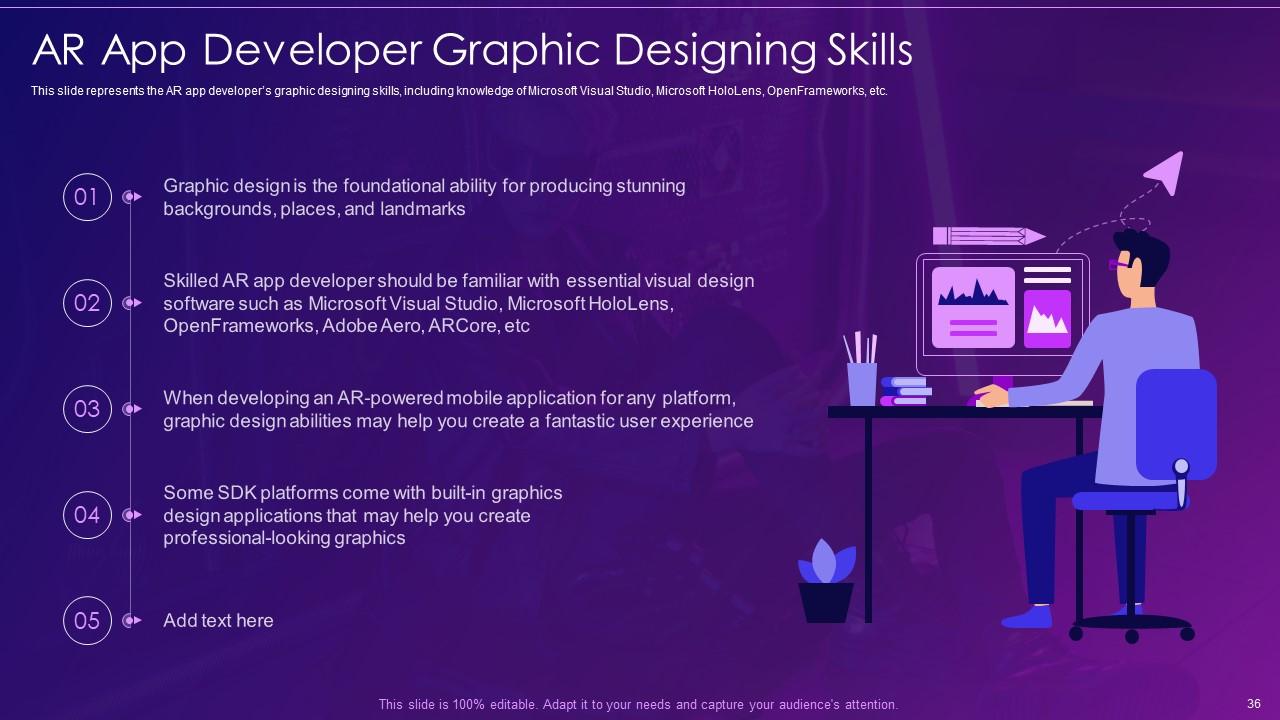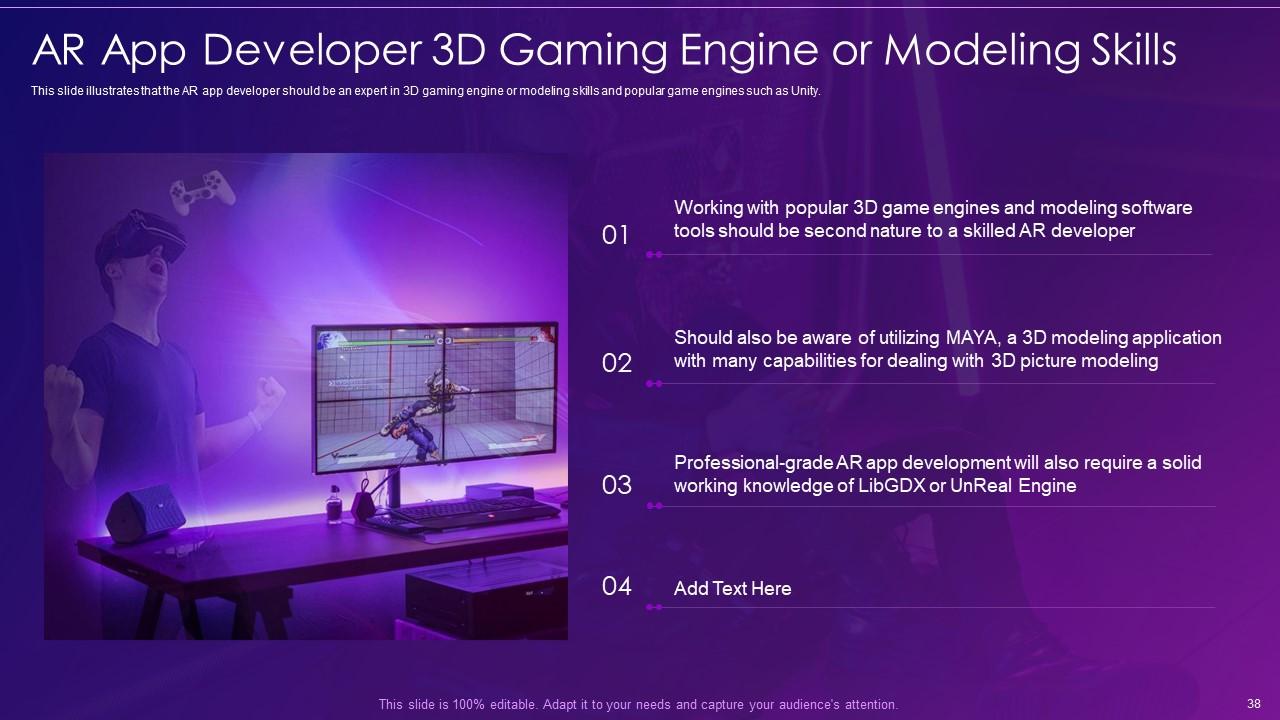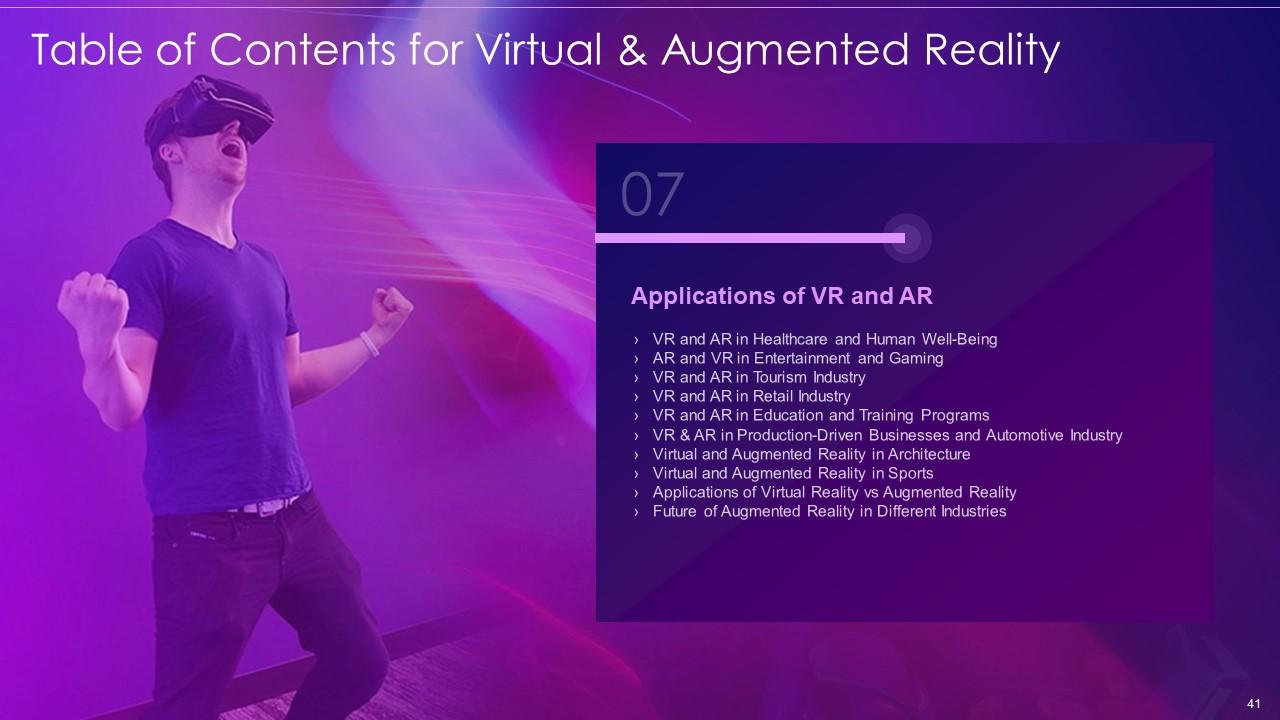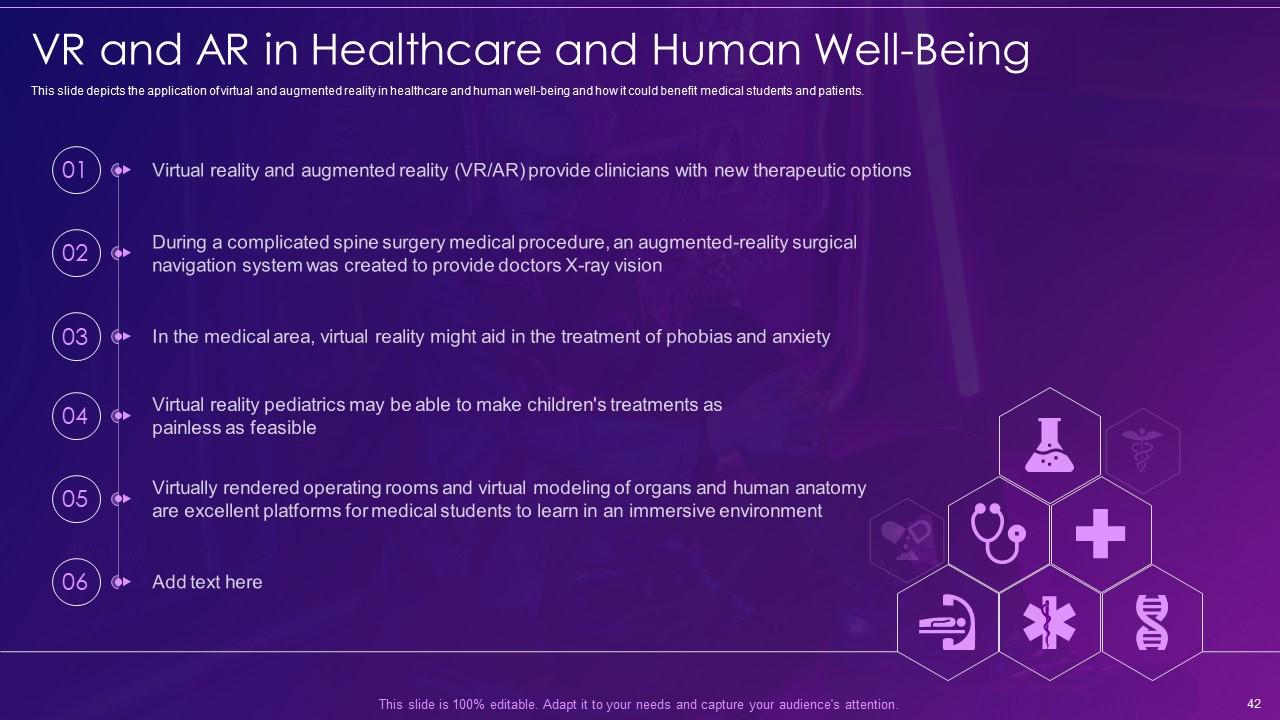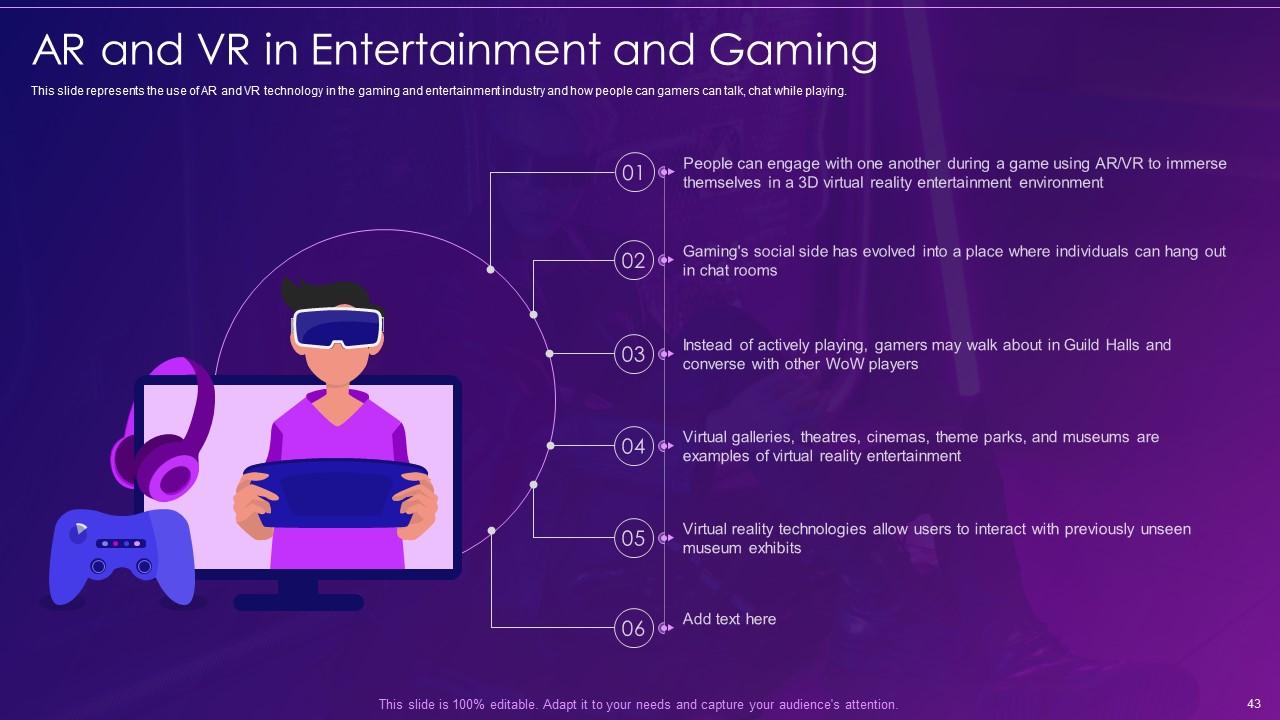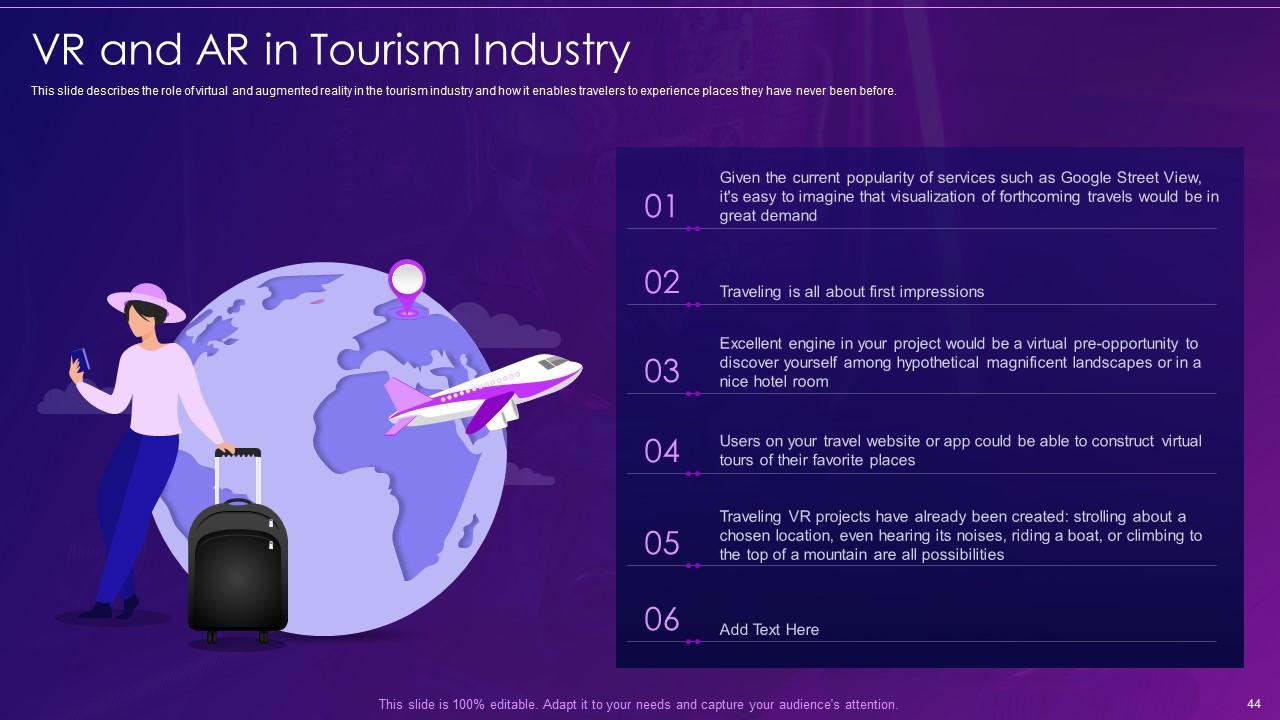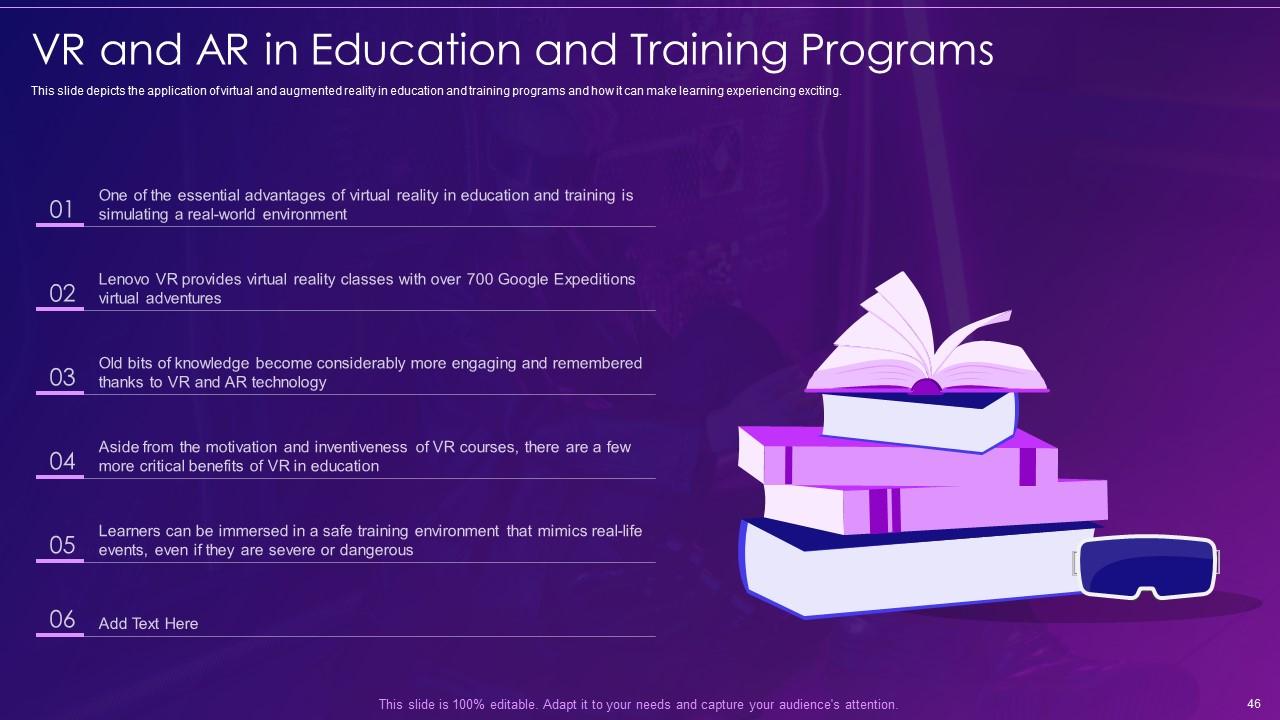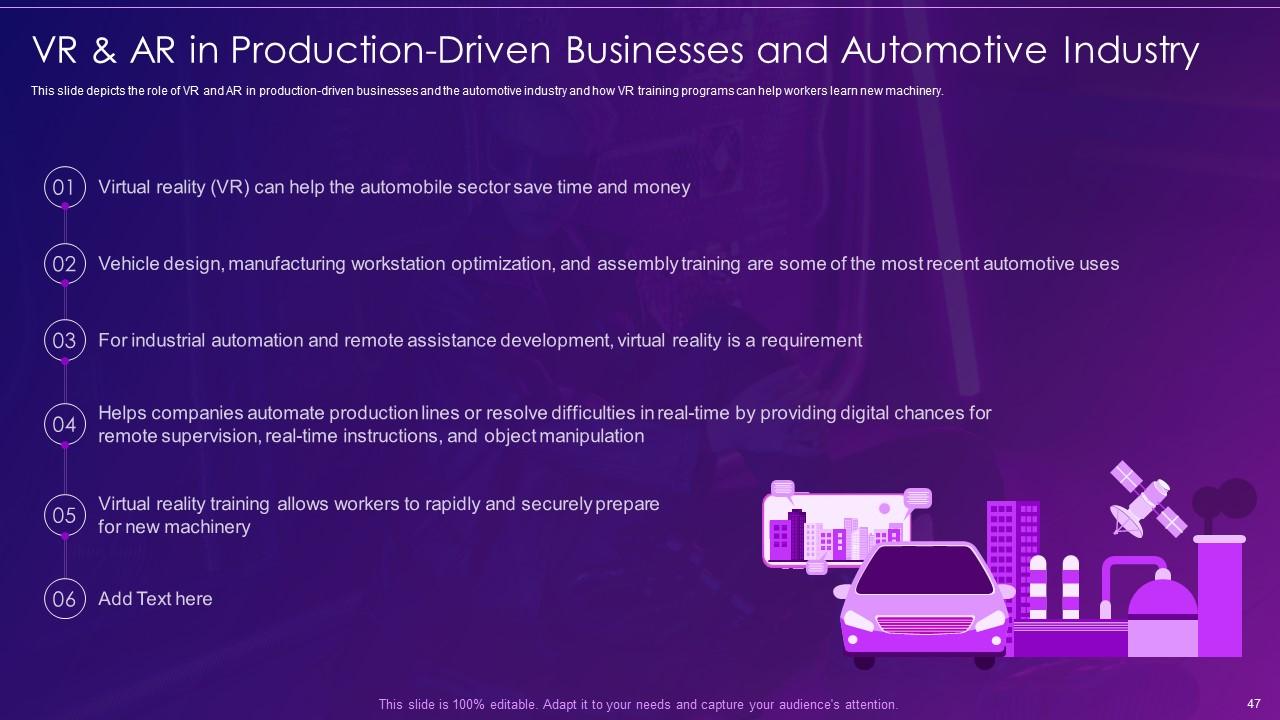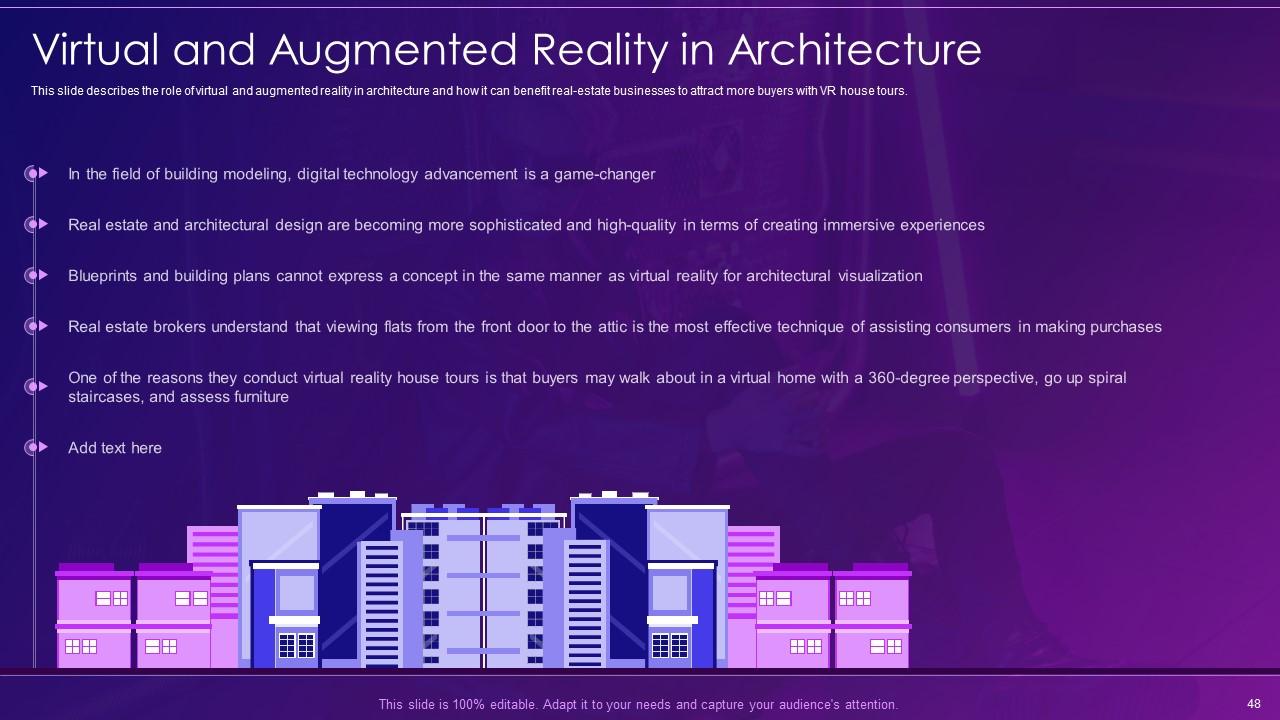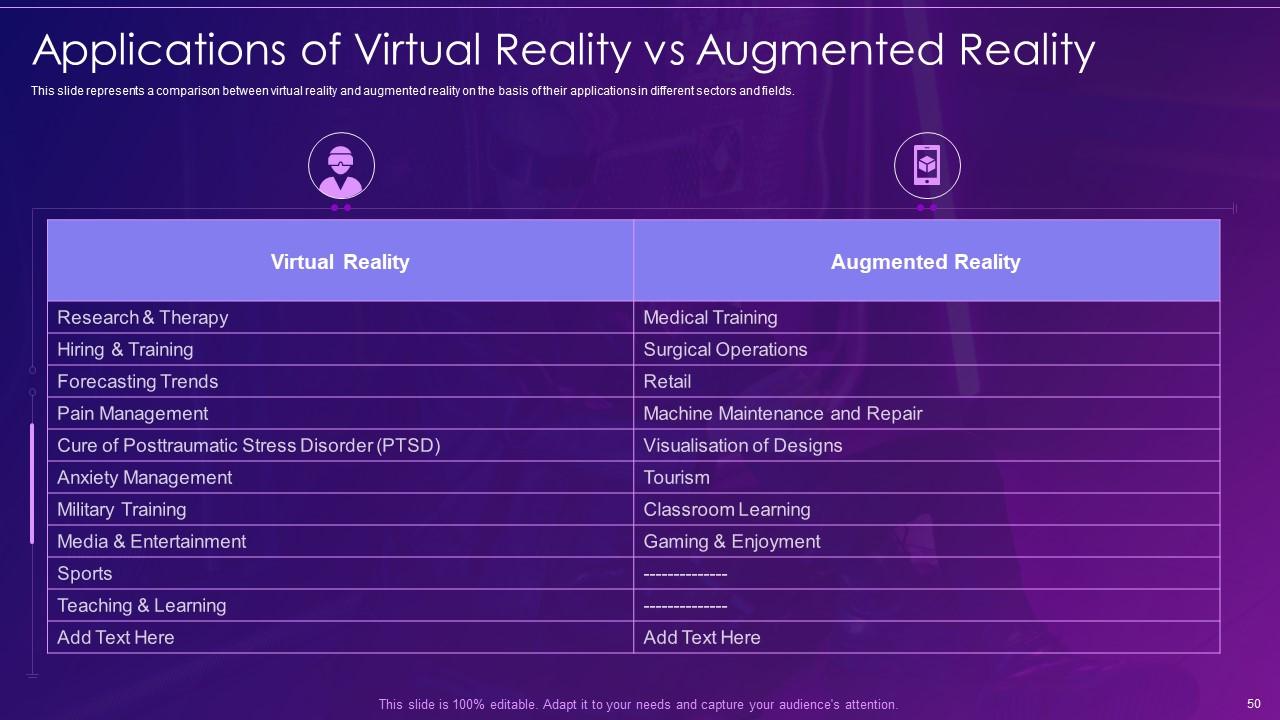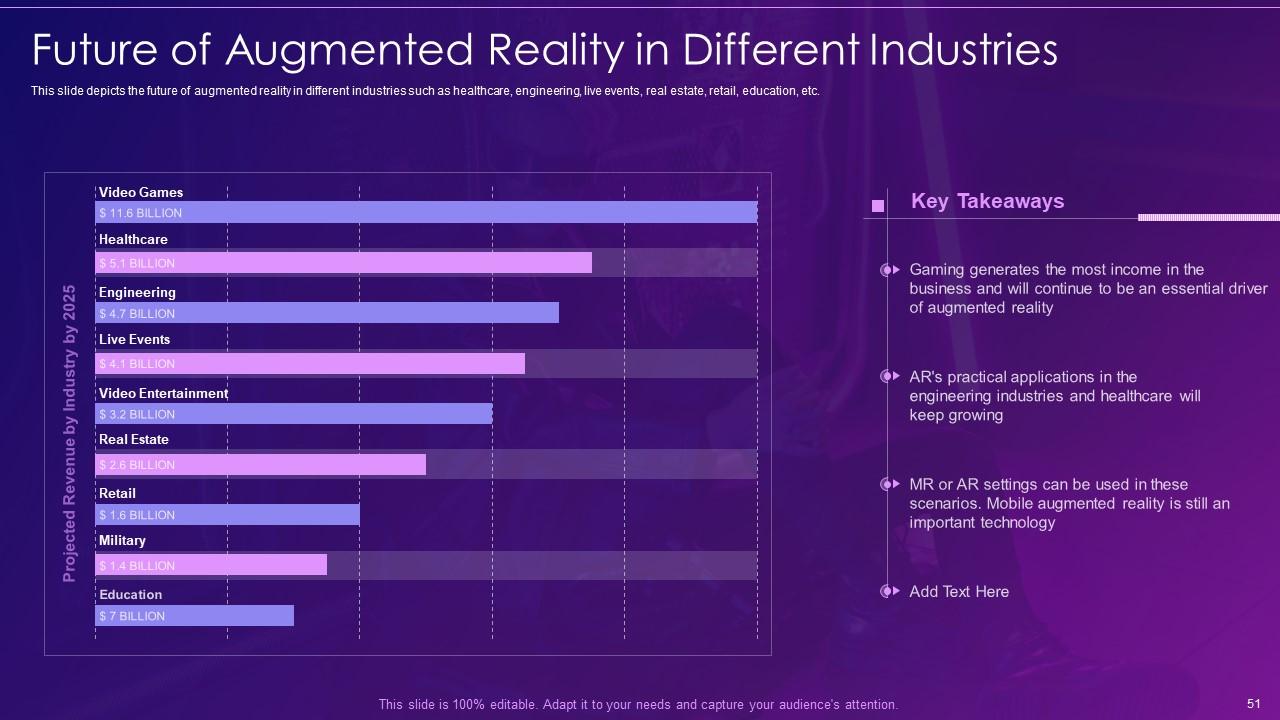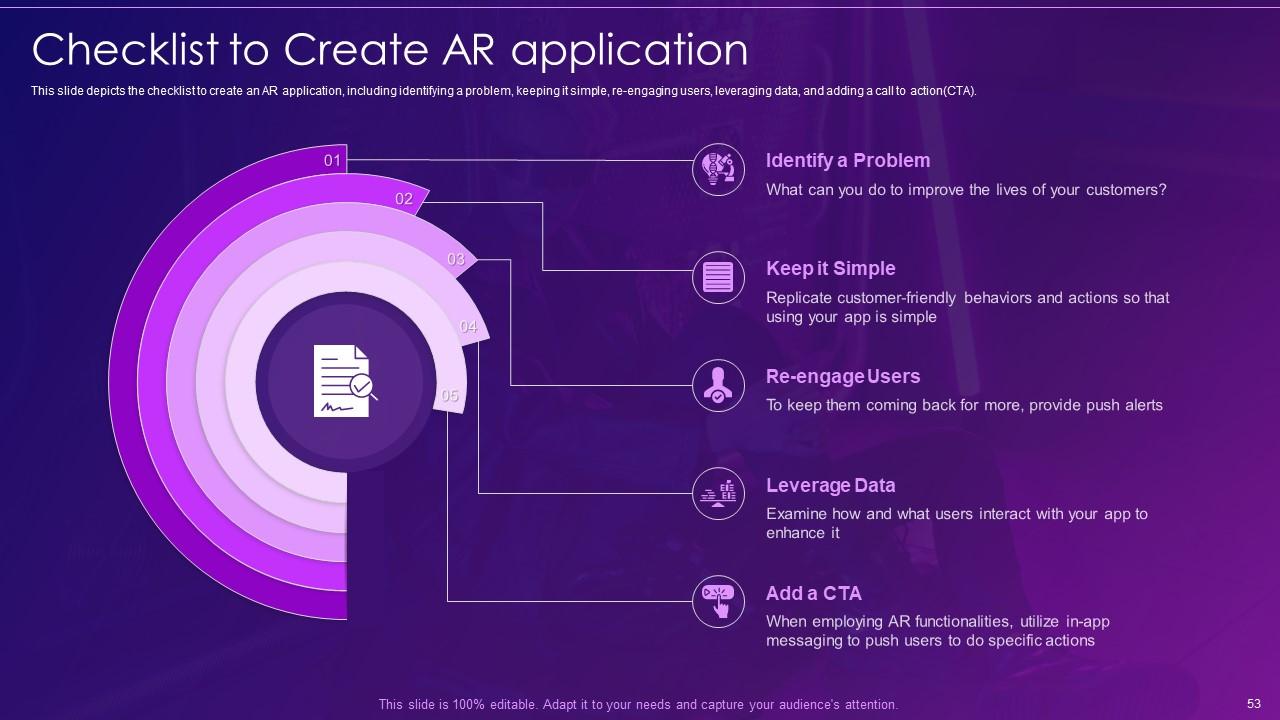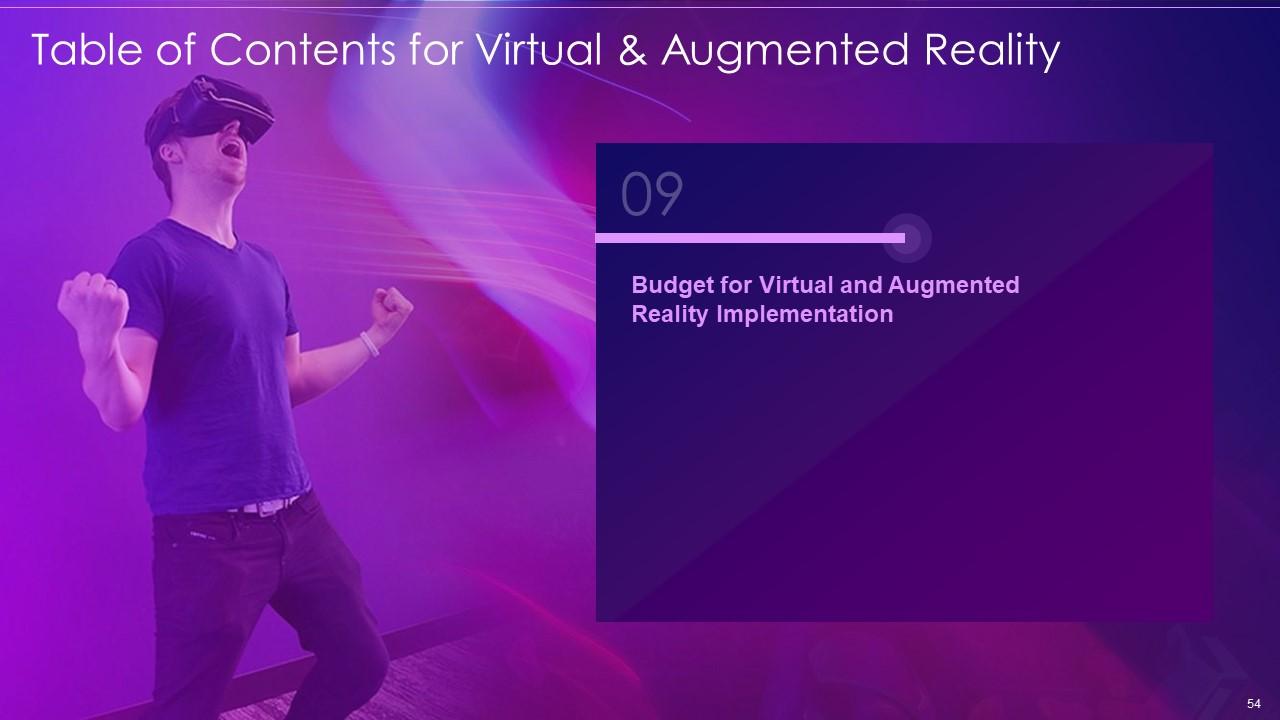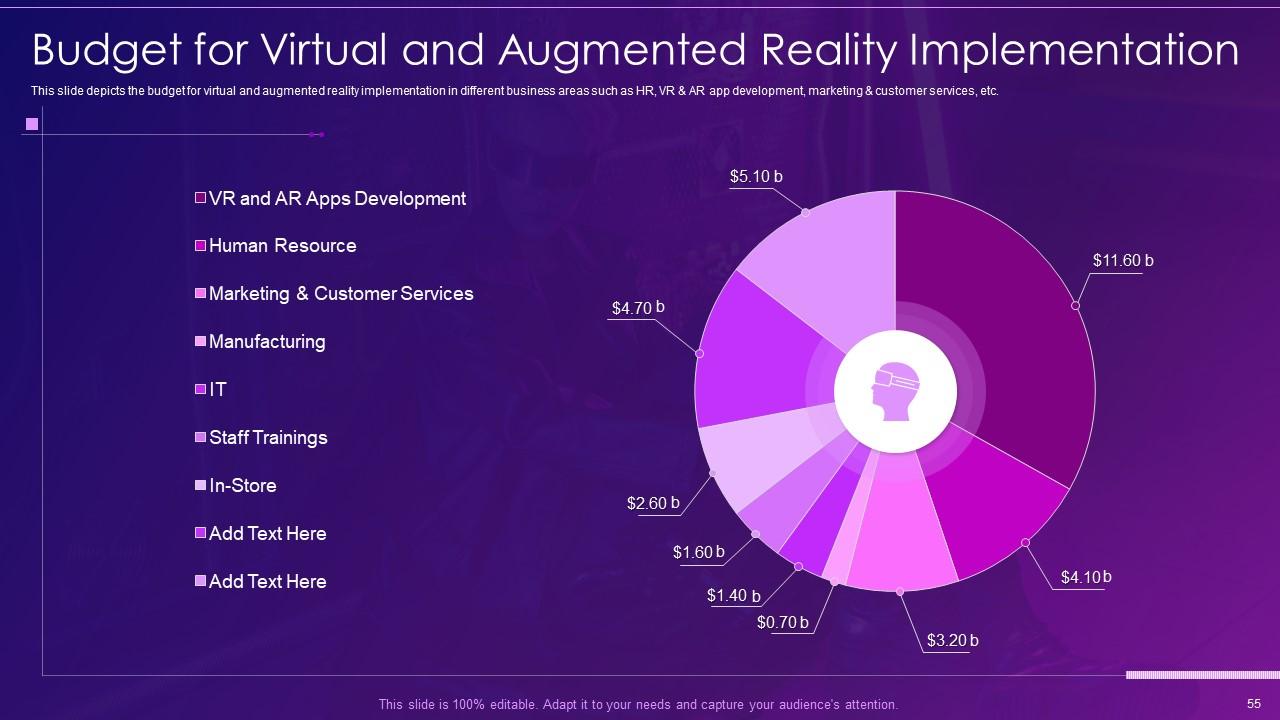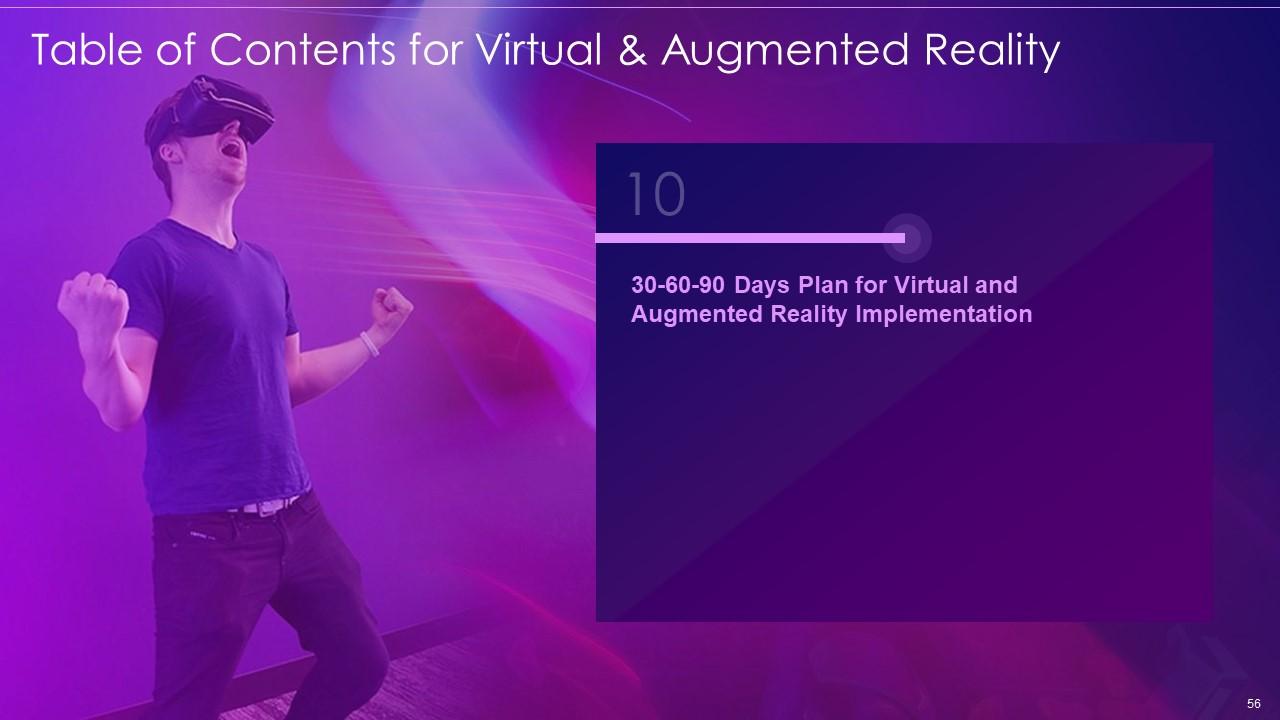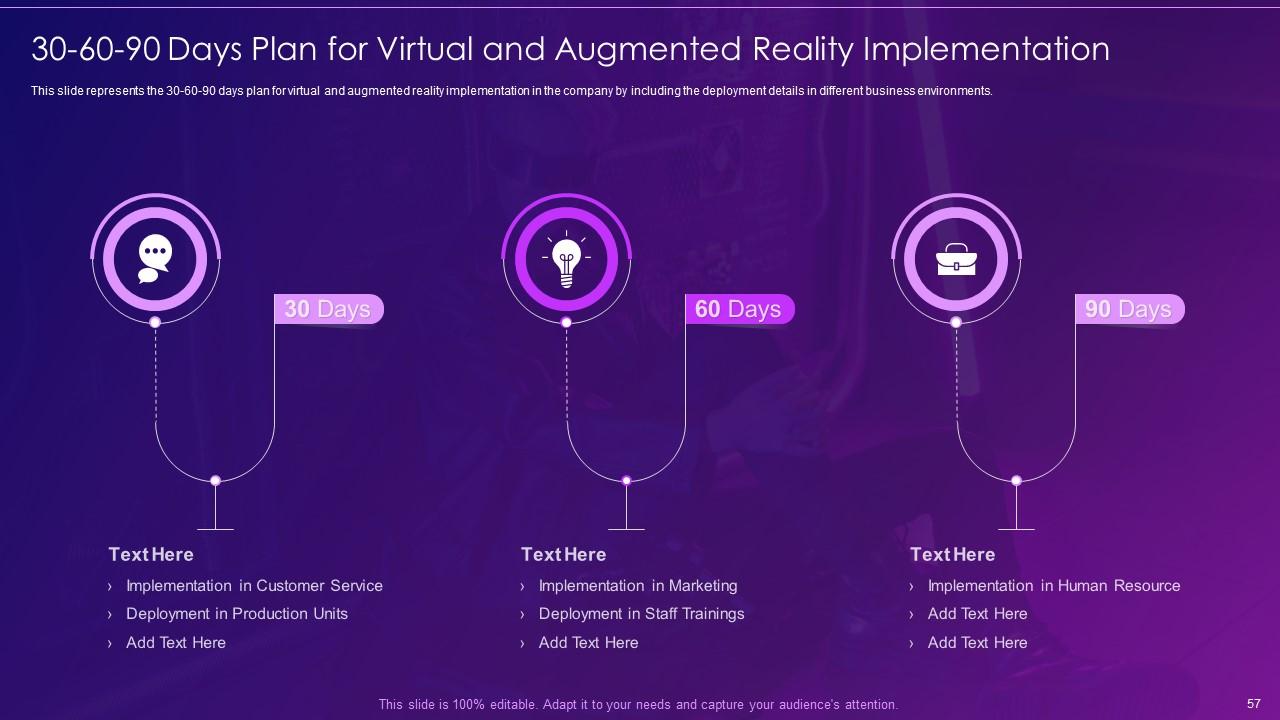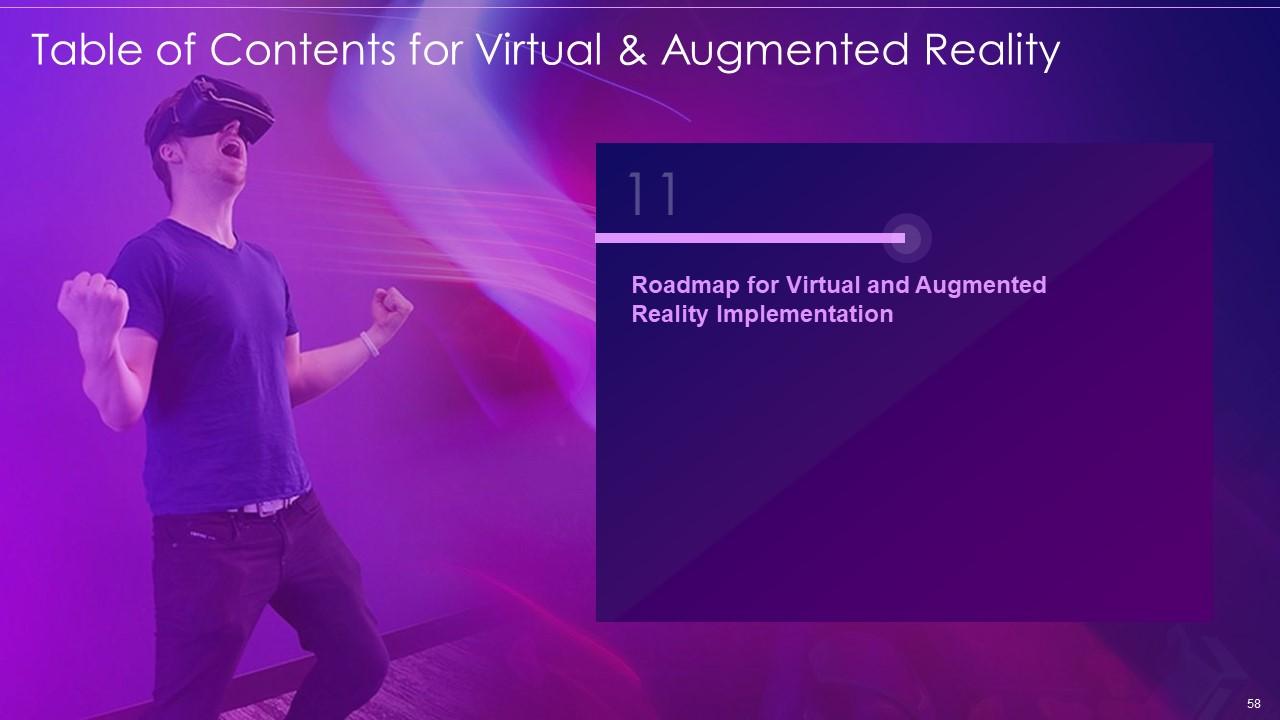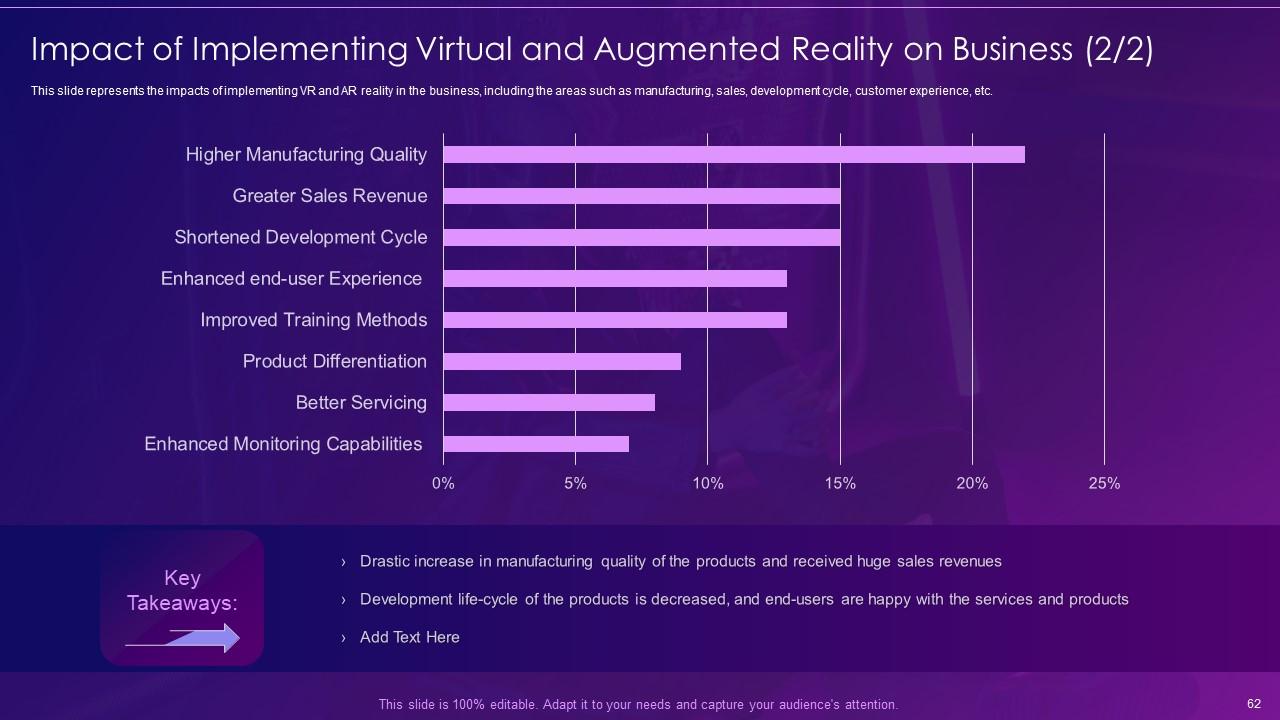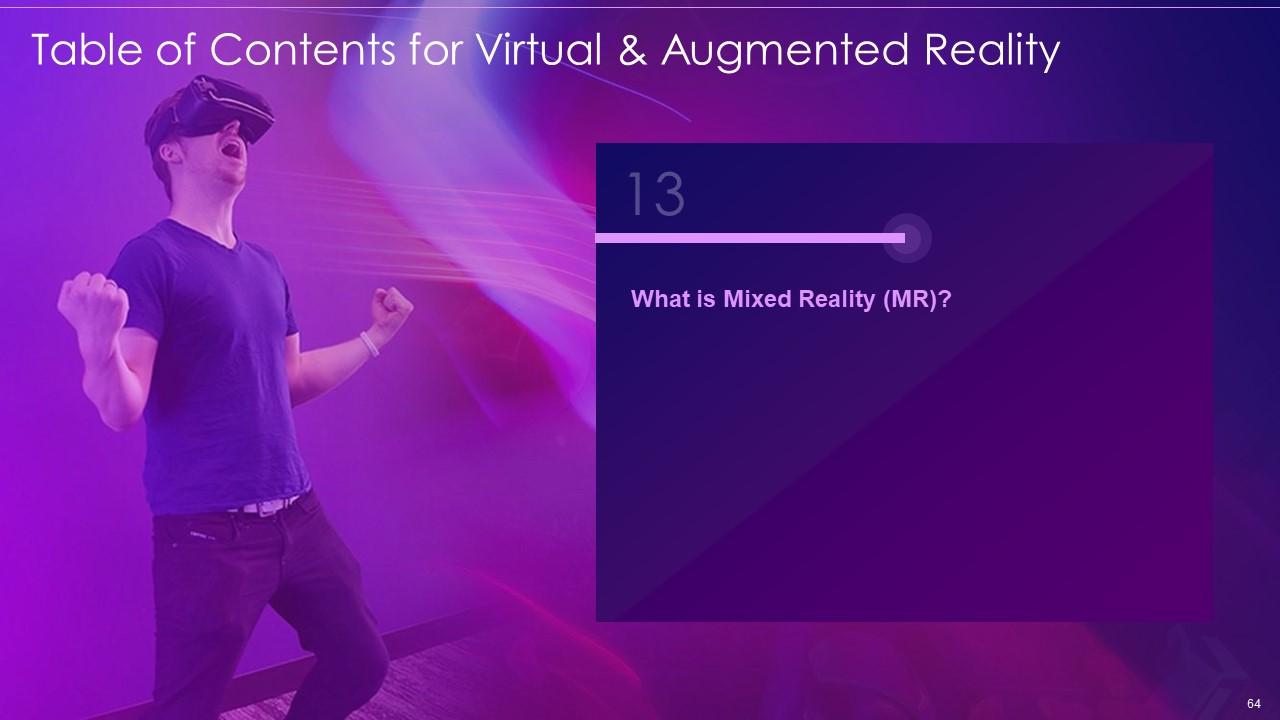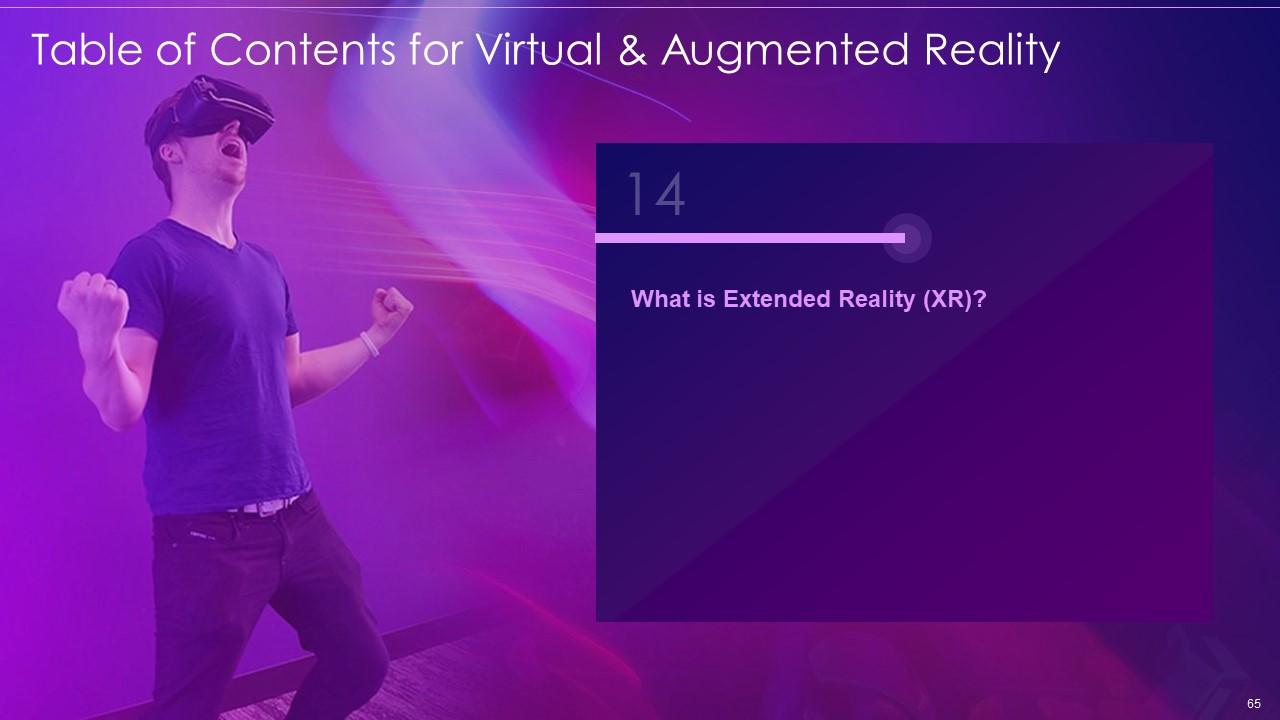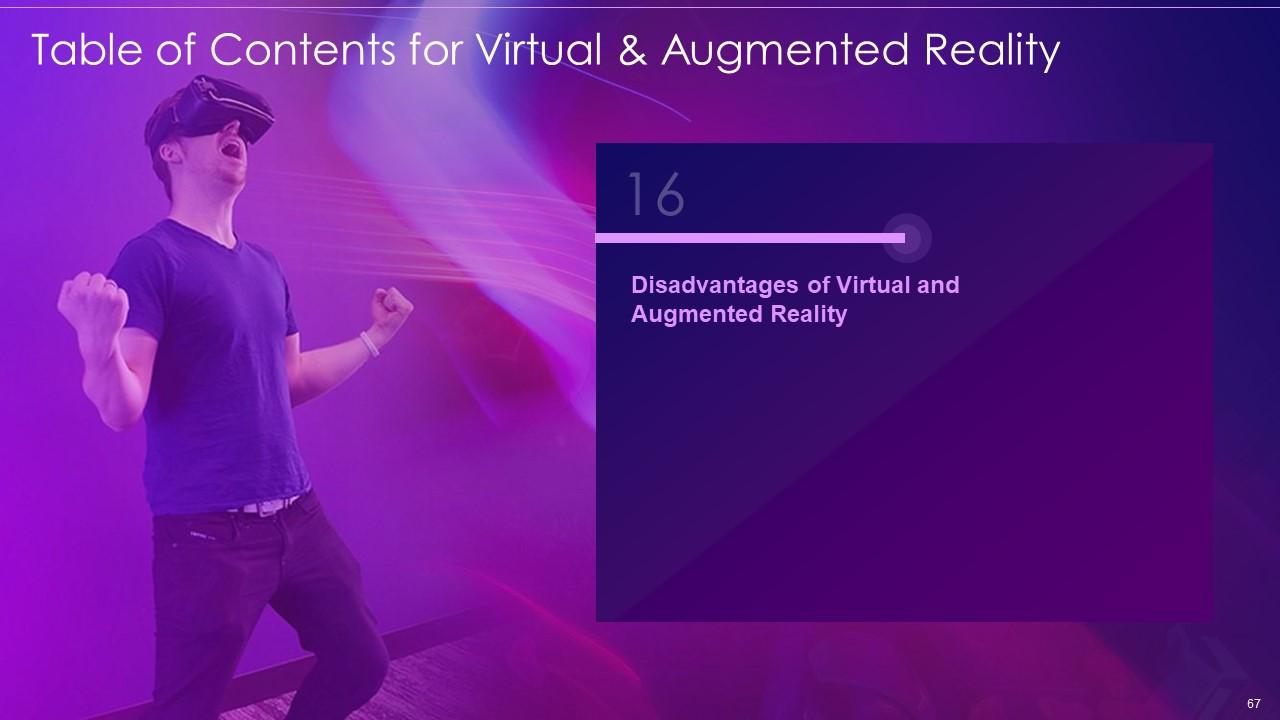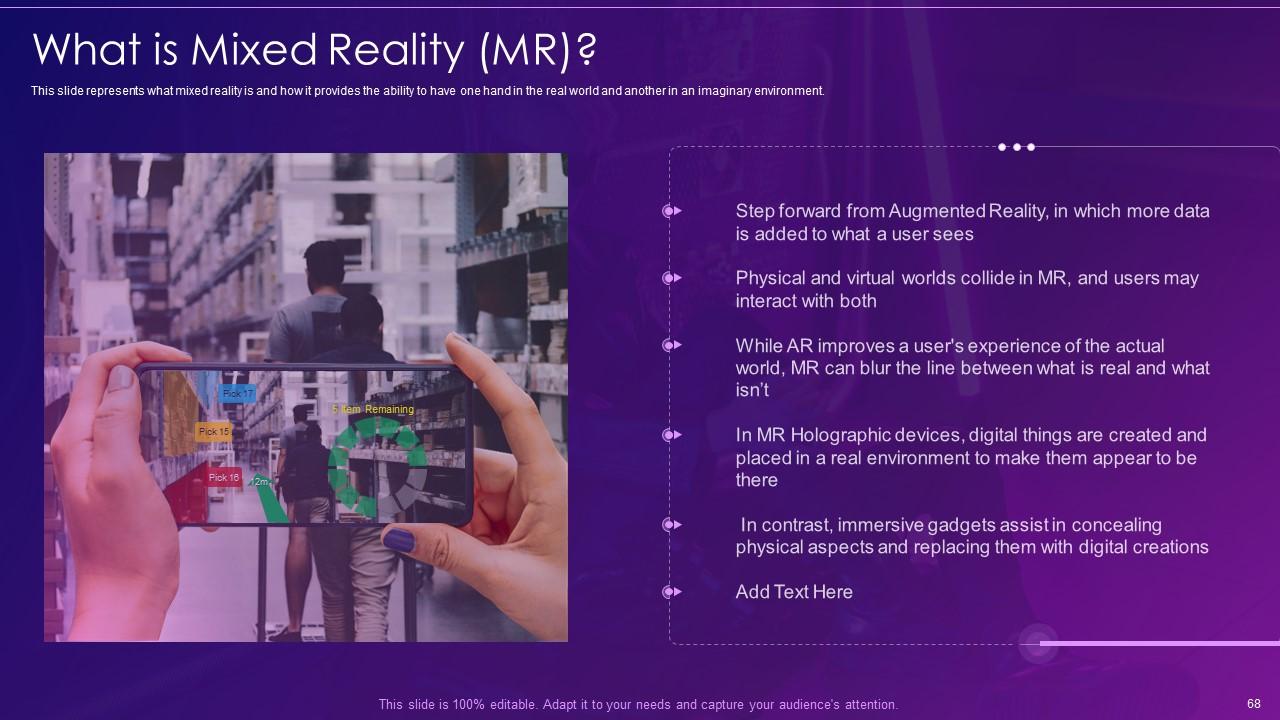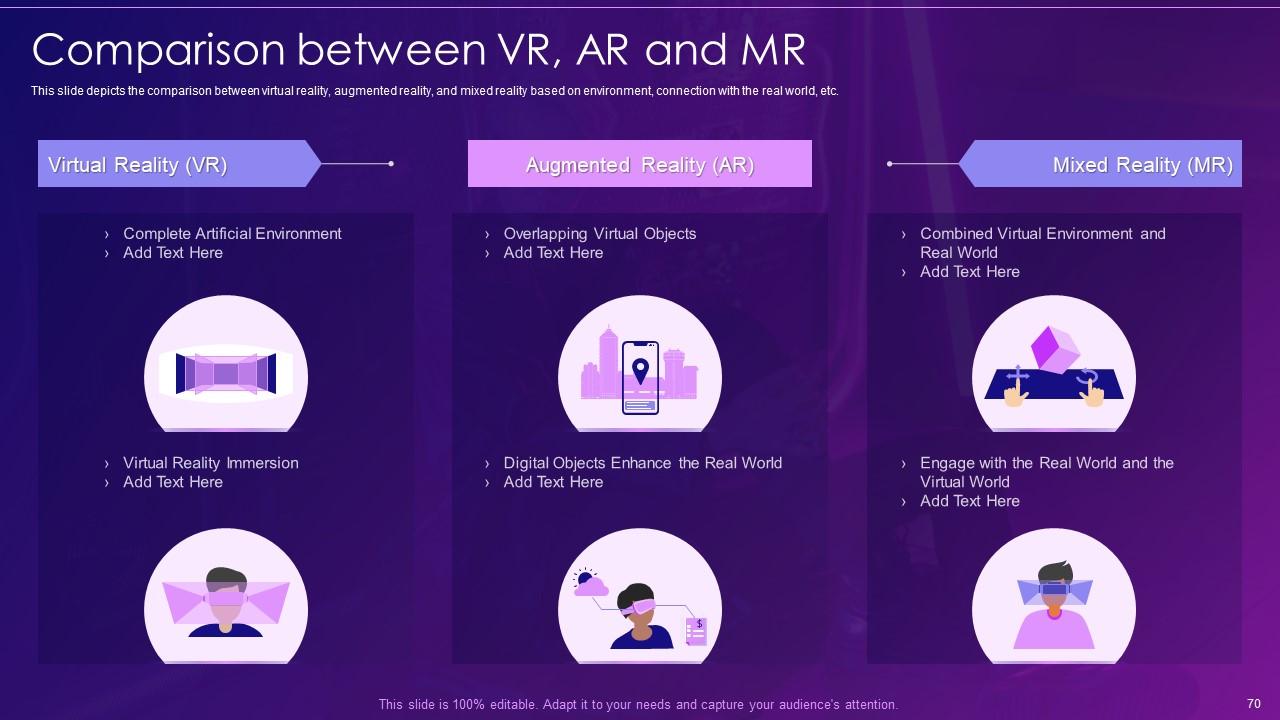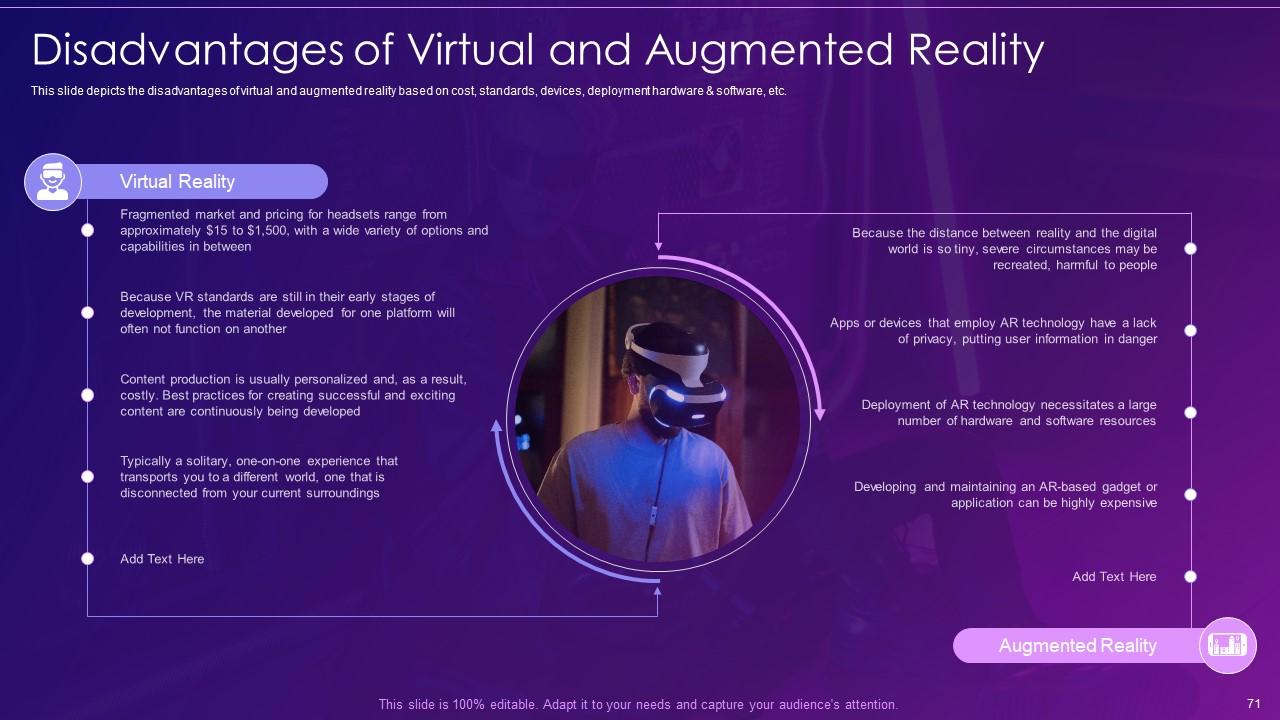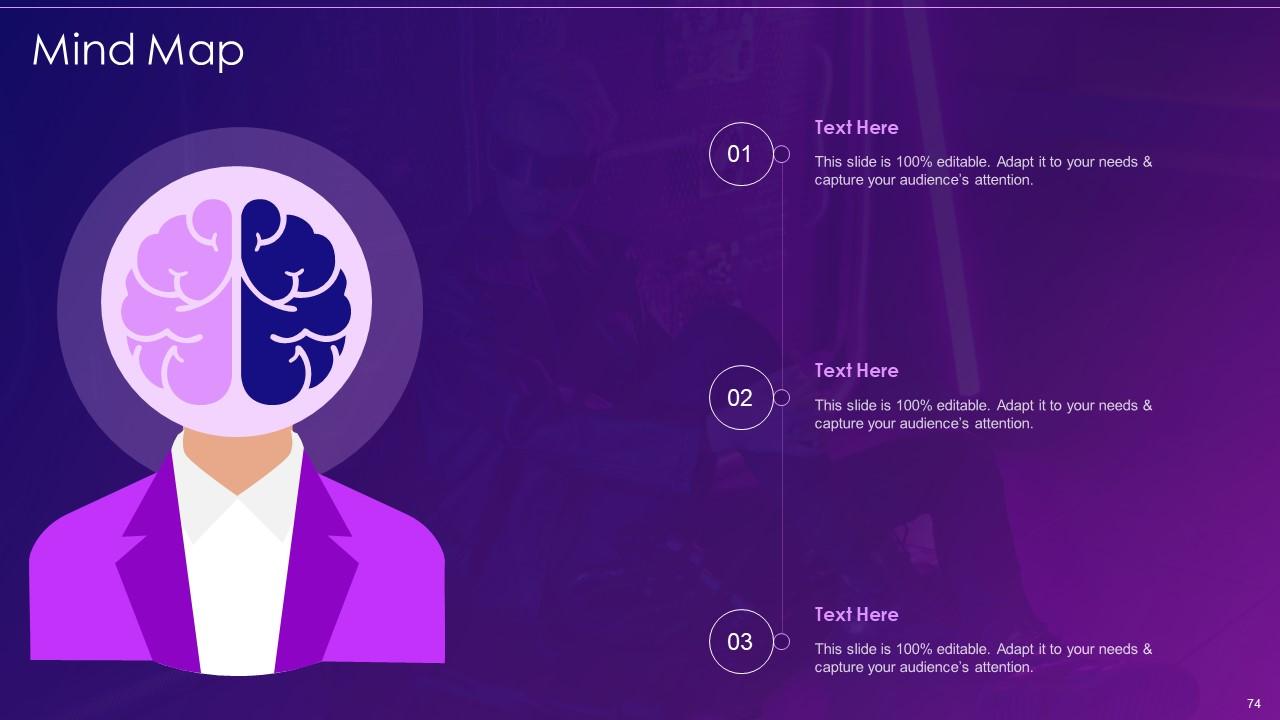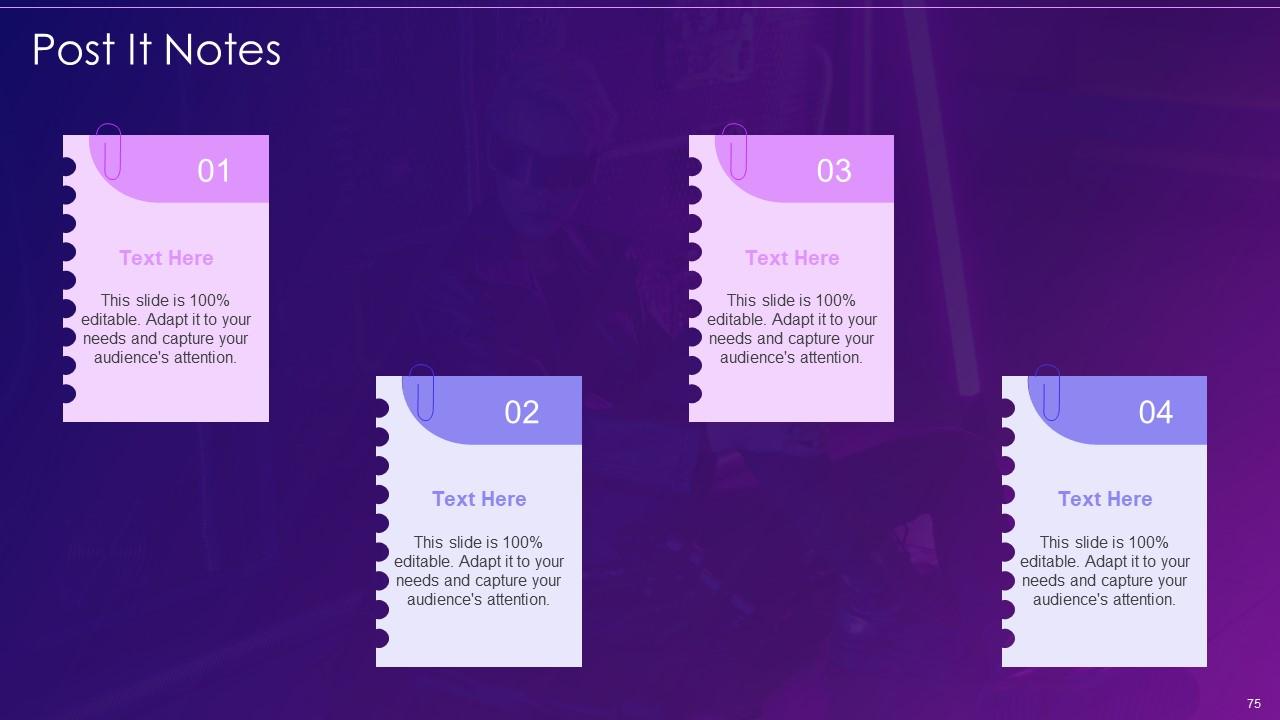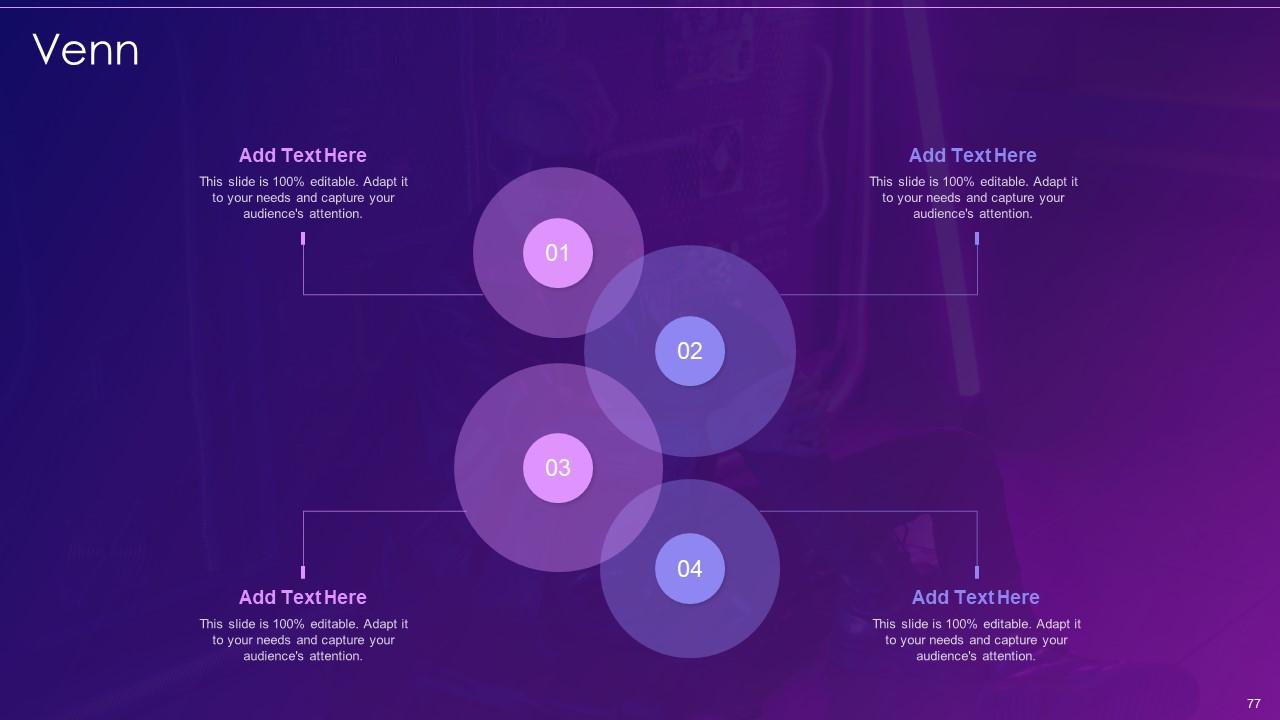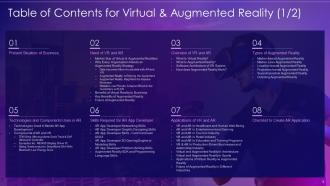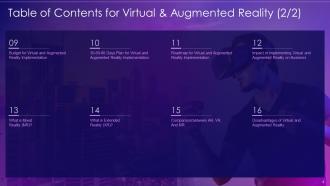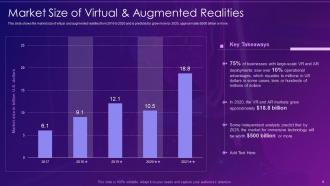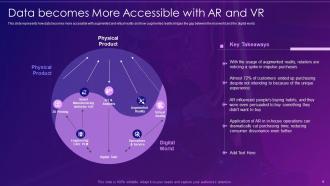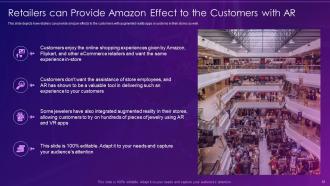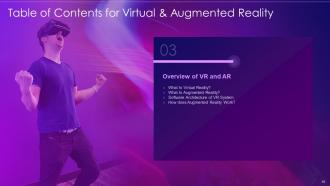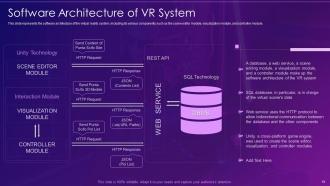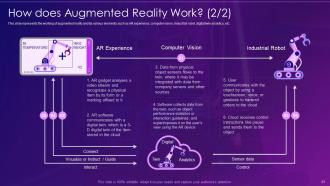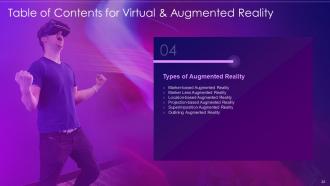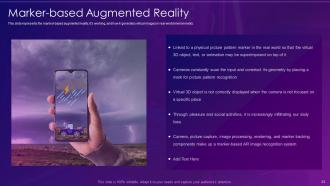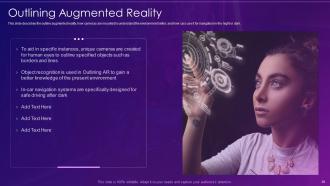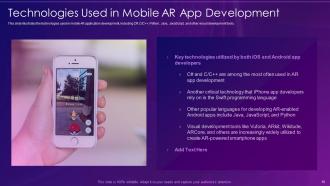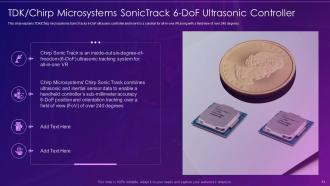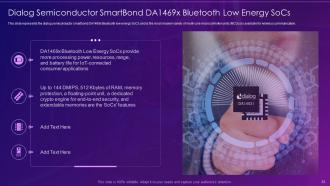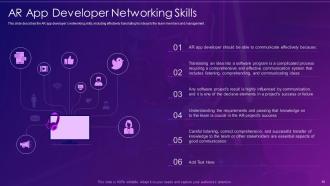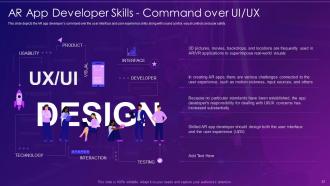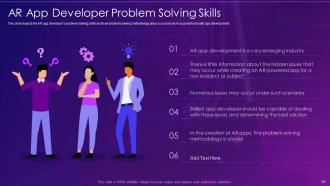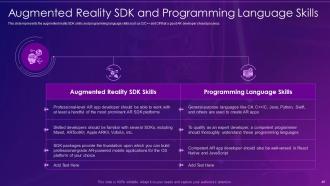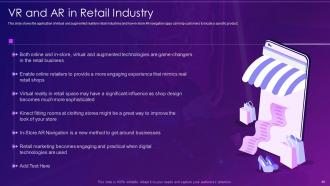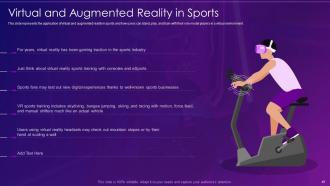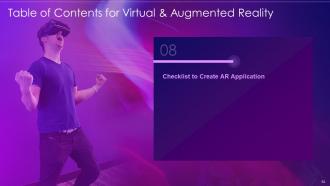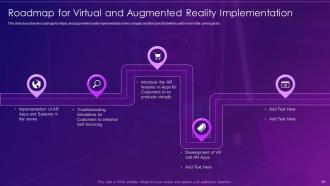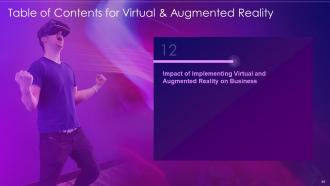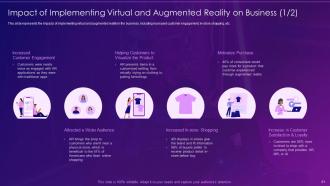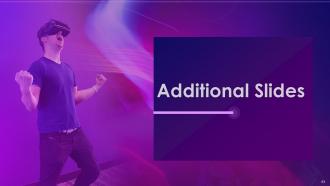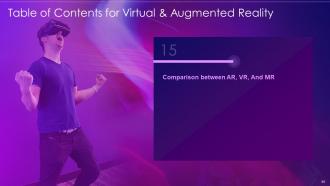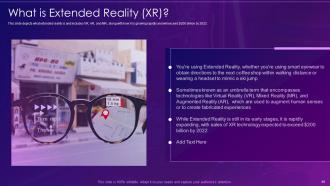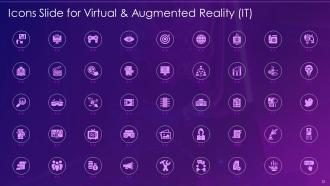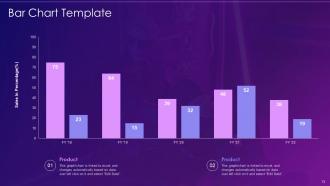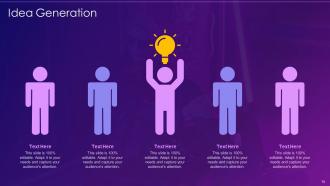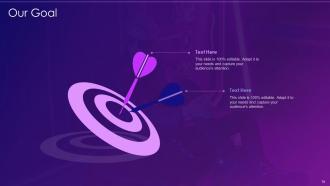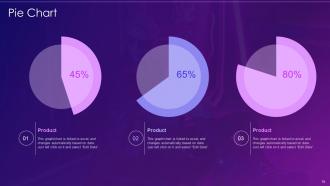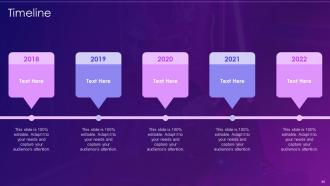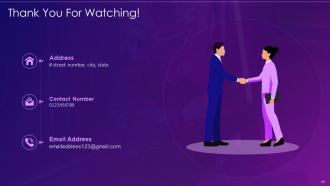Virtual and augmented reality it powerpoint presentation slides
Virtual Reality is a technology that creates almost realistic and convincing interactions in a synthetic or virtual environment. In contrast, Augmented Reality improves the real world by projecting computer-generated objects on top of it. Here is an efficiently designed template on Virtual and Augmented Reality IT that gives a brief idea about the companys current situation by focusing on the business problems like traditional methods of learning and designing. It also incorporates a slide consisting of bar graphs that shows the market size of virtual and augmented realities. Furthermore, it includes slides that cover software architecture, different types of augmented reality, technologies, and components used in augmented reality. In addition, this VR and AR PPT showcase skills required for AR app developers such as networking skills, graphic designing skills, command over UI and UX, etc. Furthermore, this template includes a checklist to implement AR and VR technology in the company and a budget for implementation. Lastly, this VR and AR deck comprises a roadmap for virtual and augmented reality, impacts of AR and VR implementation on business, mixed Reality, extended Reality, and the difference between AR, VR, and MR. Get access to fully content-ready Virtual reality and augmented reality ppt now.
- Google Slides is a new FREE Presentation software from Google.
- All our content is 100% compatible with Google Slides.
- Just download our designs, and upload them to Google Slides and they will work automatically.
- Amaze your audience with SlideTeam and Google Slides.
-
Want Changes to This PPT Slide? Check out our Presentation Design Services
- WideScreen Aspect ratio is becoming a very popular format. When you download this product, the downloaded ZIP will contain this product in both standard and widescreen format.
-

- Some older products that we have may only be in standard format, but they can easily be converted to widescreen.
- To do this, please open the SlideTeam product in Powerpoint, and go to
- Design ( On the top bar) -> Page Setup -> and select "On-screen Show (16:9)” in the drop down for "Slides Sized for".
- The slide or theme will change to widescreen, and all graphics will adjust automatically. You can similarly convert our content to any other desired screen aspect ratio.
Compatible With Google Slides

Get This In WideScreen
You must be logged in to download this presentation.
PowerPoint presentation slides
Deliver this complete deck to your team members and other collaborators. Encompassed with stylized slides presenting various concepts, this Virtual And Augmented Reality IT Powerpoint Powerpoint Presentation is the best tool you can utilize. Personalize its content and graphics to make it unique and thought-provoking. All the eighty one slides are editable and modifiable, so feel free to adjust them to your business setting. The font, color, and other components also come in an editable format making this PPT design the best choice for your next presentation. So, download now.
People who downloaded this PowerPoint presentation also viewed the following :
Content of this Powerpoint Presentation
Slide 1: This slide introduces Virtual & Augmented Reality (IT). State Your Company Name and begin.
Slide 2: This slide shows Agenda for Virtual & Augmented Reality.
Slide 3: This slide presents Table of Contents for Virtual & Augmented Reality.
Slide 4: This is another slide continuing Table of Contents for Virtual & Augmented Reality.
Slide 5: This slide shows Table of Content highlighting Present Situation of Business.
Slide 6: This slide displays presents situation of the business by describing the business problems.
Slide 7: This slide shows Table of Contents for Virtual & Augmented Reality.
Slide 8: This slide presents the market size of virtual and augmented realities from 2016 to 2020.
Slide 9: This slide represents how data becomes more accessible with augmented and virtual reality.
Slide 10: This slide shows Augmented Reality is Enticing the Customers.
Slide 11: This slide displays Augmented Reality Magnified the Impulse Purchase.
Slide 12: This slide shows Retailers can Provide Amazon Effect to the Customers with AR.
Slide 13: This slide presents benefits of virtual reality to businesses, such as revolutionize the try before you buy the concept.
Slide 14: This slide depicts the key benefits of augmented reality and how it helps user engagement.
Slide 15: This slide represents the future of virtual and augmented reality, including the rate of AR/VR gamers.
Slide 16: This slide displays Table of Contents for Virtual & Augmented Reality.
Slide 17: This slide depicts virtual reality and how it enables users to experience things or a virtual environment.
Slide 18: This slide presents what augmented reality is and how it helps to highlight environmental features of the real world.
Slide 19: This slide represents the software architecture of the virtual reality system, including its various components.
Slide 20: This slide represents how augmented reality works through computer vision, the need for computer vision, etc.
Slide 21: This slide displays the working of augmented reality and its various elements.
Slide 22: This slide shows Table of Contents for Virtual & Augmented Reality.
Slide 23: This slide represents the marked-based augmented reality, it's working, and how it generates virtual images.
Slide 24: This slide describes the maker-less augmented reality and how it works to generate objects that don’t exist.
Slide 25: This slide describes location-based augmented reality and how it is beneficial for tourists to find locations.
Slide 26: This slide depicts the projection-based augmented reality, it's working, and how it can provide feedbacks for project optimization.
Slide 27: This slide represents the superimposition of augmented reality and how it works to change the actual view of an object.
Slide 28: This slide describes the outline augmented reality, how cameras are mounted to understand the environment better.
Slide 29: This slide shows Table of Contents for Virtual & Augmented Reality.
Slide 30: This slide illustrates the technologies used in mobile AR application development, including C#, C/C++, Python, etc.
Slide 31: This slide explains TDK/Chirp microsystems SonicTracks 6-DoF ultrasonic controller and how it is a solution for all-in-one VR.
Slide 32: This slide represents Synaptics inc. R63455 display driver IC and is designed for a resolution of 2,160 by 2,400 pixels.
Slide 33: This slide presents the dialog semiconductor smartbond DA1469x Bluetooth low energy SoCs.
Slide 34: This slide shows Table of Contents for Virtual & Augmented Reality.
Slide 35: This slide describes the AR app developer’s networking skills, including effectively translating his ideas to the team members.
Slide 36: This slide represents the AR app developer’s graphic designing skills, including knowledge of Microsoft Visual Studio, Microsoft HoloLens, OpenFrameworks, etc.
Slide 37: This slide depicts the AR app developer’s command over the user interface and user experience skills.
Slide 38: This slide illustrates that the AR app developer should be an expert in 3D gaming engine or modeling skills.
Slide 39: This slide depicts the AR app developer’s problem-solving skills and how problem-solving methodology plays a crucial role in augmented reality app development.
Slide 40: This slide shows Augmented Reality SDK and Programming Language Skills.
Slide 41: This slide displays Table of Contents for Virtual & Augmented Reality.
Slide 42: This slide depicts the application of virtual and augmented reality in healthcare and human well-being.
Slide 43: This slide represents the use of AR and VR technology in the gaming and entertainment industry.
Slide 44: This slide describes the role of virtual and augmented reality in the tourism industry.
Slide 45: This slide shows the application of virtual and augmented reality in retail industries and how in-store AR navigation apps can help customers.
Slide 46: This slide depicts the application of virtual and augmented reality in education and training programs.
Slide 47: This slide shows VR & AR in Production-Driven Businesses and Automotive Industry.
Slide 48: This slide presents Virtual and Augmented Reality in Architecture.
Slide 49: This slide represents the application of virtual and augmented reality in sports and how users can stand, play, and train.
Slide 50: This slide represents a comparison between virtual reality and augmented reality on the basis of their applications in different sectors and fields.
Slide 51: This slide depicts the future of augmented reality in different industries such as healthcare, engineering, etc.
Slide 52: This slide shows Table of Contents for Virtual & Augmented Reality.
Slide 53: This slide depicts the checklist to create an AR application, including identifying a problem, keeping it simple, re-engaging users, etc.
Slide 54: This slide shows Table of Contents for Virtual & Augmented Reality.
Slide 55: This slide depicts the budget for virtual and augmented reality implementation in different business areas.
Slide 56: This slide shows Table of Contents for Virtual & Augmented Reality.
Slide 57: This slide represents the 30-60-90 days plan for virtual and augmented reality implementation in the company.
Slide 58: This slide shows Table of Contents for Virtual & Augmented Reality.
Slide 59: This slide describes the roadmap for virtual and augmented reality implementation in the company.
Slide 60: This slide shows Table of Contents for Virtual & Augmented Reality.
Slide 61: This slide represents the impacts of implementing virtual and augmented reality in the business, including increased customer engagement, in-store shopping, etc.
Slide 62: This slide shows Impact of Implementing Virtual and Augmented Reality on Business.
Slide 63: This slide is titled as Additional Slides for moving forward.
Slide 64: This slide shows Table of Content highlighting What is Mixed Reality (MR)?
Slide 65: This slide displays Table of Content highlighting What is Extended Reality (XR)?
Slide 66: This slide shows Table of Content highlighting Comparison between AR, VR, And MR.
Slide 67: This slide displays Table of Content highlighting Disadvantages of Virtual and Augmented Reality.
Slide 68: This slide represents what mixed reality is and how it provides the ability to have one hand in the real world and another in an imaginary environment.
Slide 69: This slide depicts what extended reality is and includes VR, AR, and MR, along with how it is growing rapidly.
Slide 70: This slide depicts the comparison between virtual reality, augmented reality, and mixed reality.
Slide 71: This slide depicts the disadvantages of virtual and augmented reality based on cost, standards, devices, etc.
Slide 72: This slide shows Icons for Virtual & Augmented Reality.
Slide 73: This slide presents Bar Chart Template with two products comparison.
Slide 74: This slide shows Mind Map with related imagery.
Slide 75: This slide displays Post It Notes. Post your important notes here.
Slide 76: This is an Idea Generation slide to state a new idea or highlight information, specifications etc.
Slide 77: This slide shows Venn diagram with text boxes.
Slide 78: This is Our Goal slide. State your firm's goals here.
Slide 79: This slide shows Pie Chart with data in percentage.
Slide 80: This is a Timeline slide. Show data related to time intervals here.
Slide 81: This is a Thank You slide with address, contact numbers and email address.
Virtual and augmented reality it powerpoint presentation slides with all 81 slides:
Use our Virtual And Augmented Reality IT Powerpoint Presentation Slides to effectively help you save your valuable time. They are readymade to fit into any presentation structure.
FAQs
Augmented reality can provide a unique and interactive experience for customers, allowing them to engage with products or services in a new and exciting way.
The future of virtual and augmented reality is promising, with a growing number of gamers and applications in various industries, such as healthcare, engineering, and education.
An augmented reality app developer should have networking, graphic designing, user interface and user experience, 3D modeling or gaming engine skills, and problem-solving methodology expertise. They should also have knowledge of programming languages and AR SDKs.
Augmented reality enhances the real world by overlaying computer-generated information or images on it, while virtual reality simulates an entirely different environment, making the user feel like they are somewhere else entirely.
Virtual Reality (VR) refers to a computer-generated simulation of a three-dimensional environment that users can interact with. Augmented Reality (AR) is the integration of digital information with the user's physical environment.
-
Amazing product with appealing content and design.


